Building a home studio can be a game-changer for your music career.
It gives you the flexibility to create, record, and mix music in a comfortable space without the restrictions of time and cost that come with renting a professional studio.
Moreover, having a home studio allows you to experiment and explore your creative ideas without any pressure.
This is essential when discovering your signature sound and unique artistic style.
This guide is designed to be comprehensive and detailed, giving you all the knowledge and insights you need to create the perfect home studio environment.
So, let’s dive in!
Table of Contents
- Home Studio 101
- Room Acoustics
- Audio Interfaces
- Studio Monitors
- Active vs. Passive Monitors
- Microphones
- MIDI Controllers
- Headphones
- Open-Back Headphones vs. Closed-Back Headphones
- DAWs
- Popular DAWs
- Studio Furniture
- Essential Accessories
- Room Calibration Tools
- Acoustic Guitars & Electric Guitars for Home Studios
- Bass Guitars for Home Studios
- Guitar & Bass Amplifiers
- FX Pedals
- Virtual Instruments & Sample Libraries
- Final Thoughts
Home Studio 101
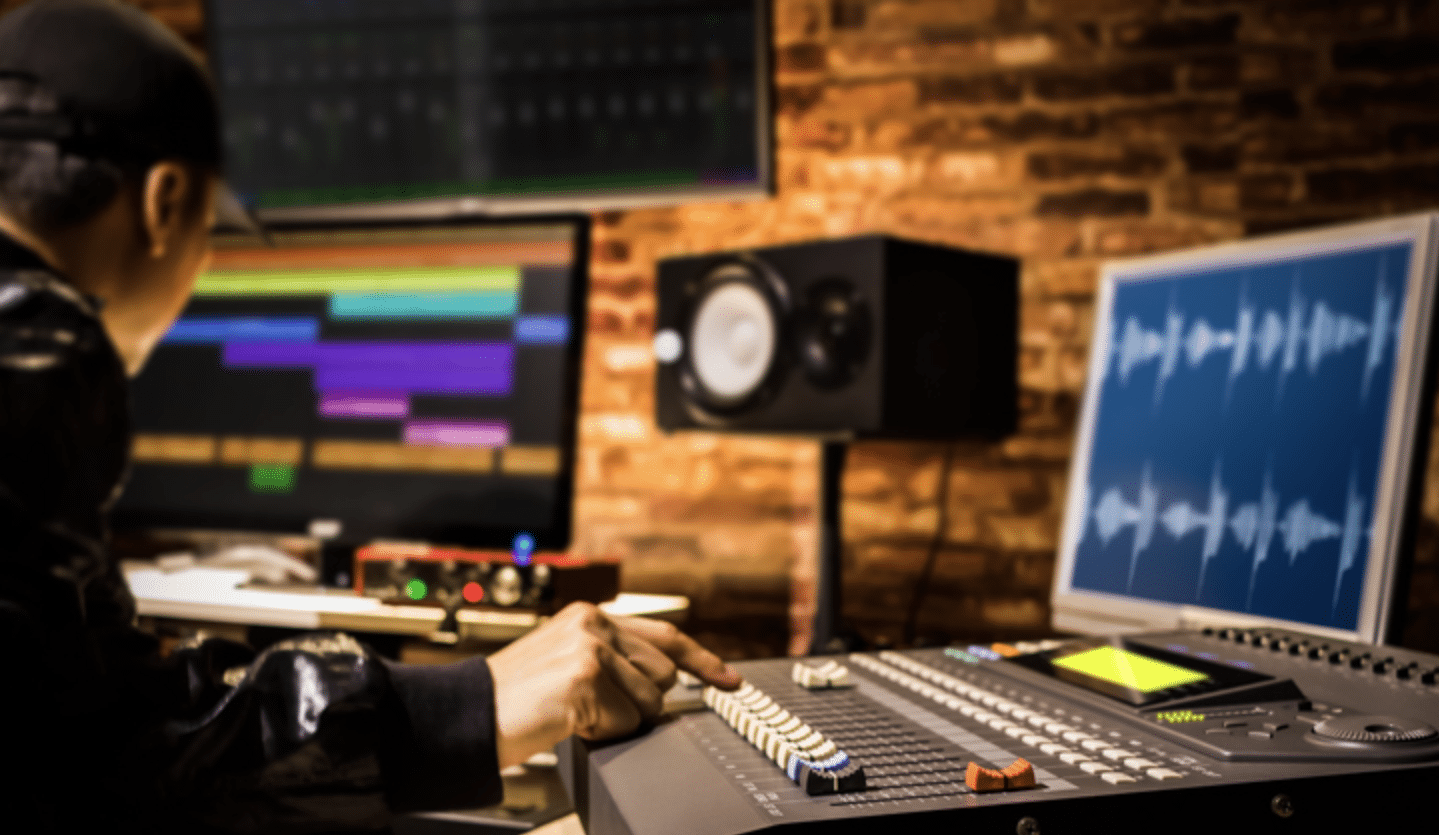
First things first, you need to find the right room for your home studio.
Ideally, you should choose a quiet, dedicated space away from household noise and distractions, like a spare bedroom, basement, or even a garage.
Keep in mind that your chosen room should have enough space to accommodate your gear, instruments, and furniture comfortably.
If you plan to record live instruments or vocals, it’s essential to choose a room with minimal background noise and good sound isolation from the rest of your living space.
The most frustrating thing in the world is to be in your creative zone, only to be interrupted or cramped.
-
Room Size
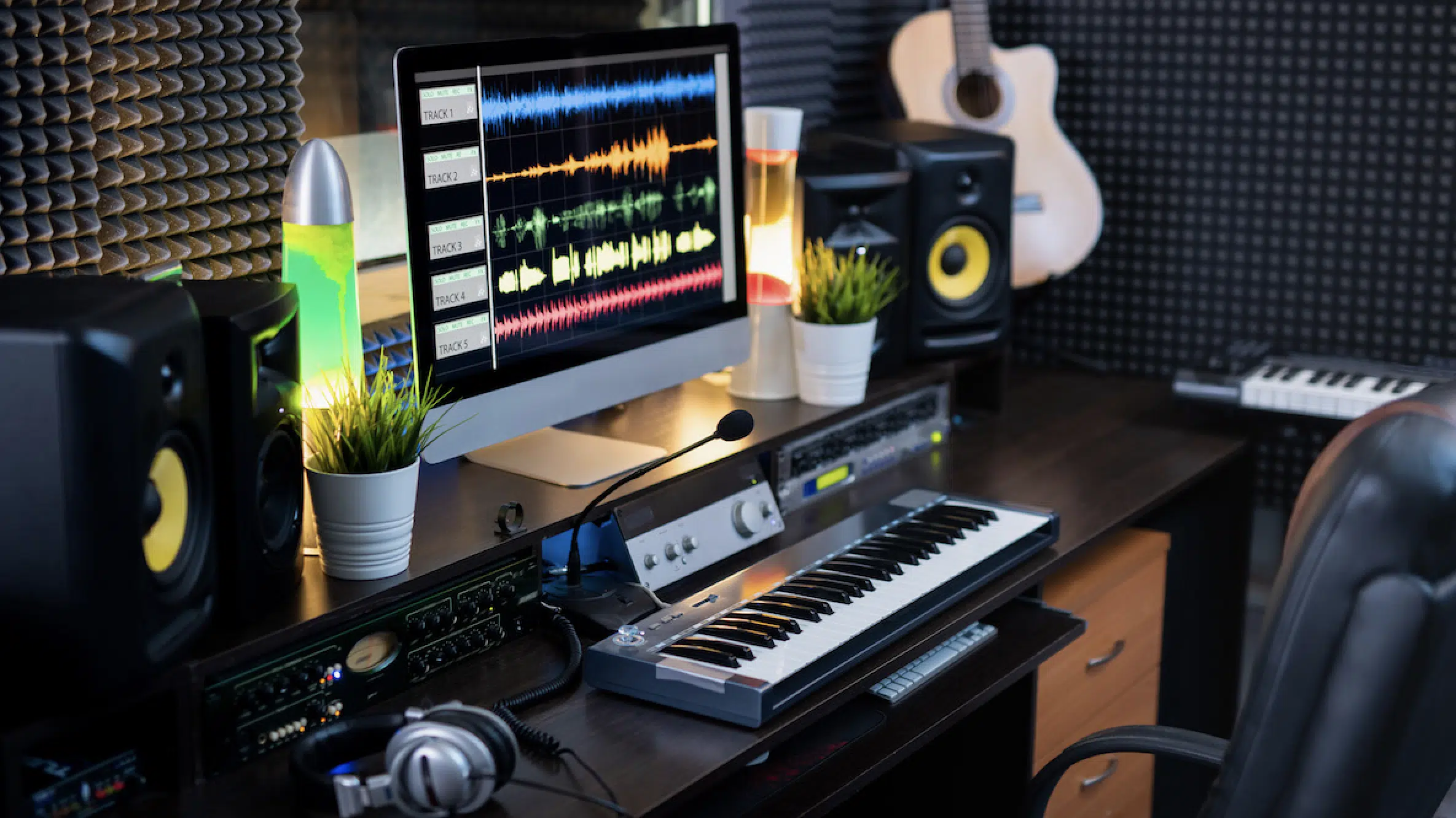
Consider the size of your room, as it will impact the type and amount of acoustic treatment needed.
- A small room 一 might require more bass traps and absorption.
- A larger room 一 may need a combination of absorption and diffusion.
The layout of your room also plays a part in determining where to place your gear and acoustic treatment.
Consider factors like your room’s shape, ceiling height, and any architectural features that may influence your music studio acoustics (like alcoves, bay windows, or sloped ceilings).
Your home recording studio equipment isn’t the only factor to consider.
Room Acoustics
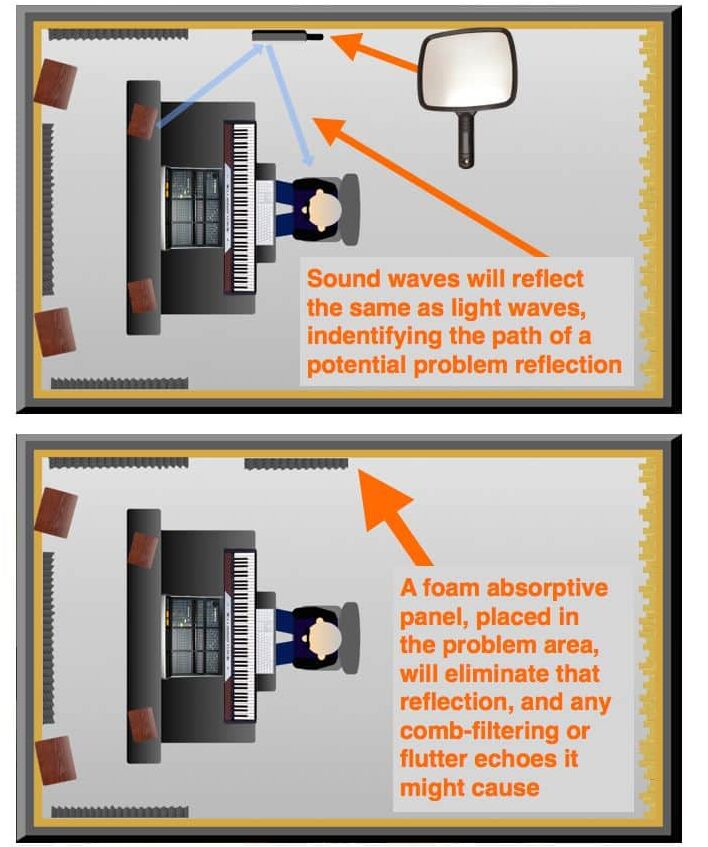
It’s essential to consider the room’s acoustics when planning your home studio.
Common acoustic issues include standing waves, flutter echoes, and bass build-up.
- Standing waves are caused by sound reflecting between parallel surfaces, creating areas of high and low pressure.
- Flutter echoes occur when sound bounces back and forth between parallel walls; resulting in a rapid series of.
- Bass build-up, also known as ‘room modes,’ happens when low-frequency sound waves reinforce or cancel each other out, creating an uneven bass response.
Addressing these issues with proper acoustic treatment will help you achieve a more accurate listening environment.
As well as improve the overall sound quality of your recordings and professional mixes.
-
Acoustic Treatment
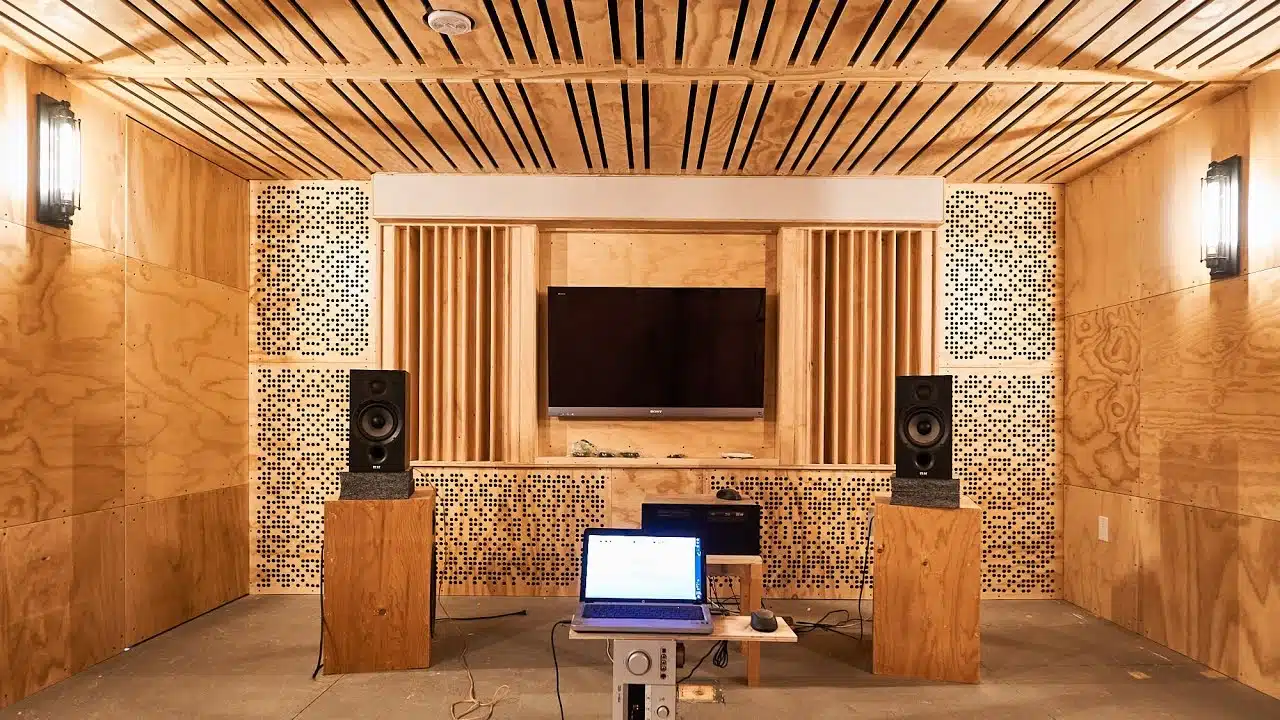
Acoustic treatment is crucial for creating an accurate listening environment in your home studio.
It helps control the sound within your room by absorbing, diffusing, or reflecting sound waves, which ultimately results in better mixes and recordings.
Acoustic treatment is not the same as soundproofing, which focuses on preventing sound from entering or leaving a space.
While soundproofing may be necessary in some cases, acoustic treatment is a more critical aspect of improving your home studio’s sound quality.
-
Bass Traps
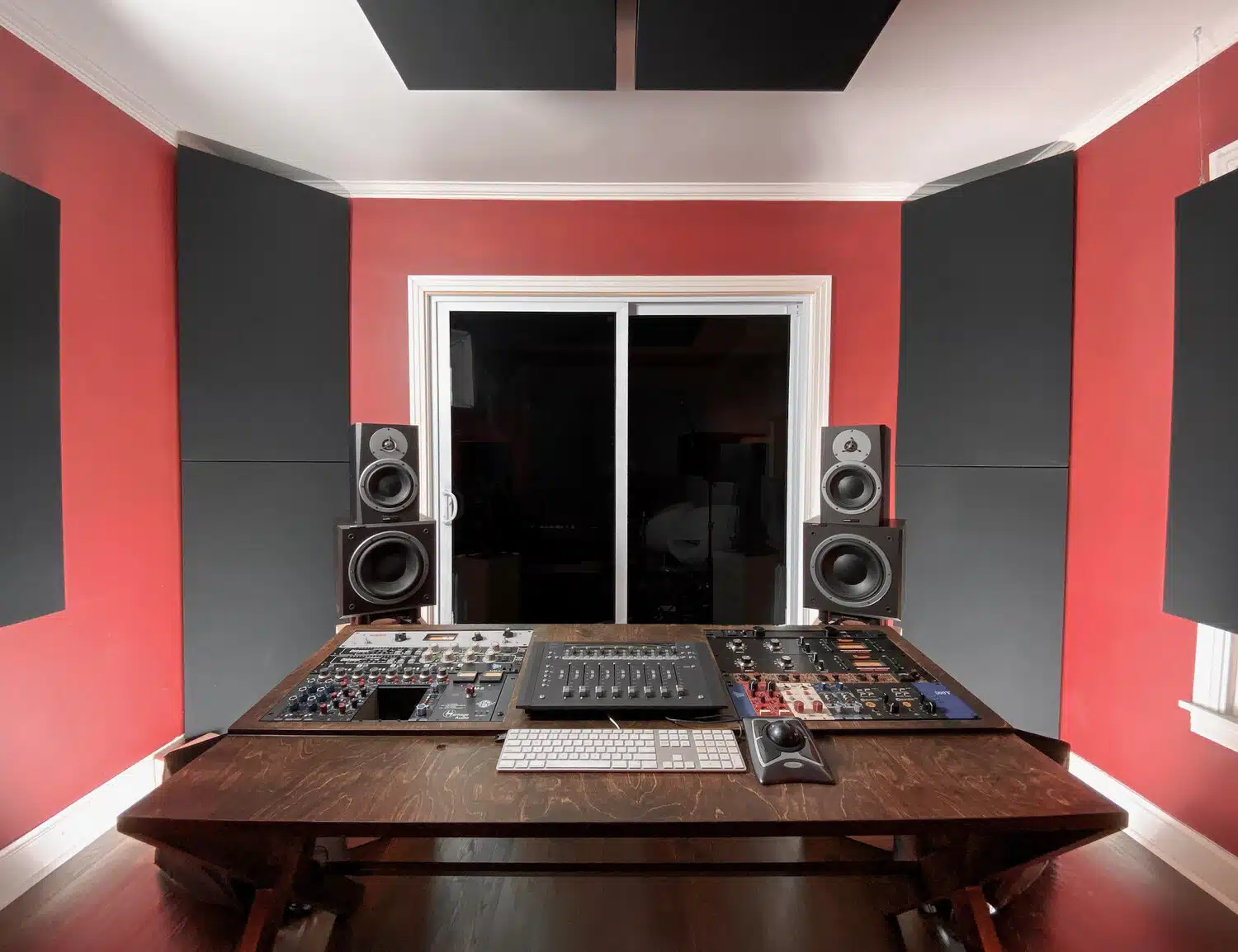
Bass traps are designed to absorb low-frequency energy and help prevent bass build-up in your room.
They are typically placed in the corners of your room, where bass tends to accumulate.
There are various types of bass traps, such as foam, fiberglass, and rock wool.
The most effective bass traps are made from dense materials like fiberglass or rock wool; they can absorb a wider range of frequencies compared to foam.
When selecting bass traps, consider factors like size, thickness, and material.
As well as your room’s specific dimensions and acoustic issues.
-
Acoustic Panels
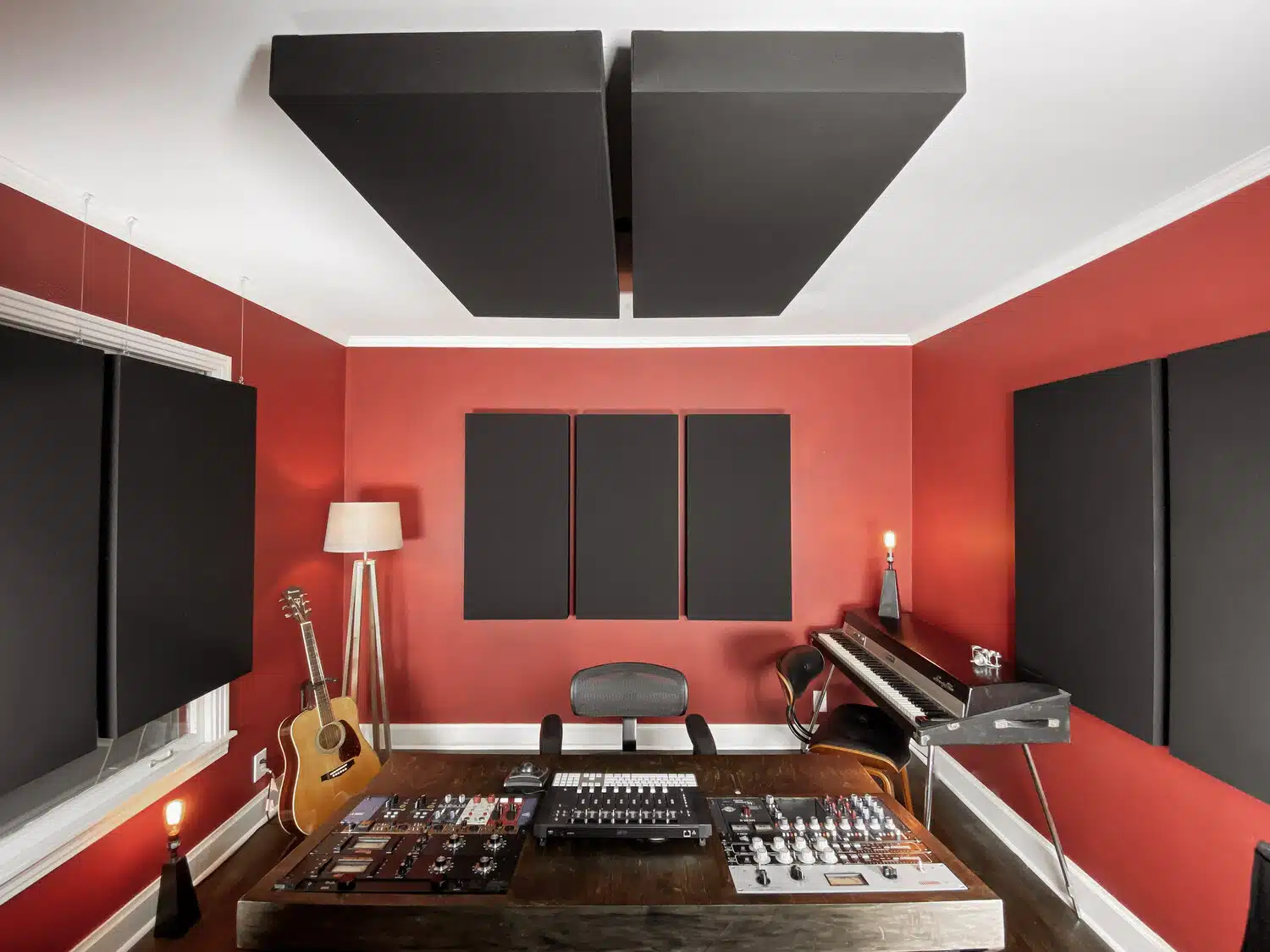
Acoustic panels are used to absorb mid and high-frequency reflections, reducing reverb and echo in your room.
They are typically made from materials like fiberglass, rock wool, or foam (like bass traps) and are covered with acoustically transparent fabric.
When placing acoustic panels, focus on the first reflection points on your walls and ceiling.
These are the spots where sound from your studio monitors directly reflects towards your listening position.
By treating these areas of your home studio, you’ll significantly improve the clarity and accuracy of your sound.
-
Diffusers
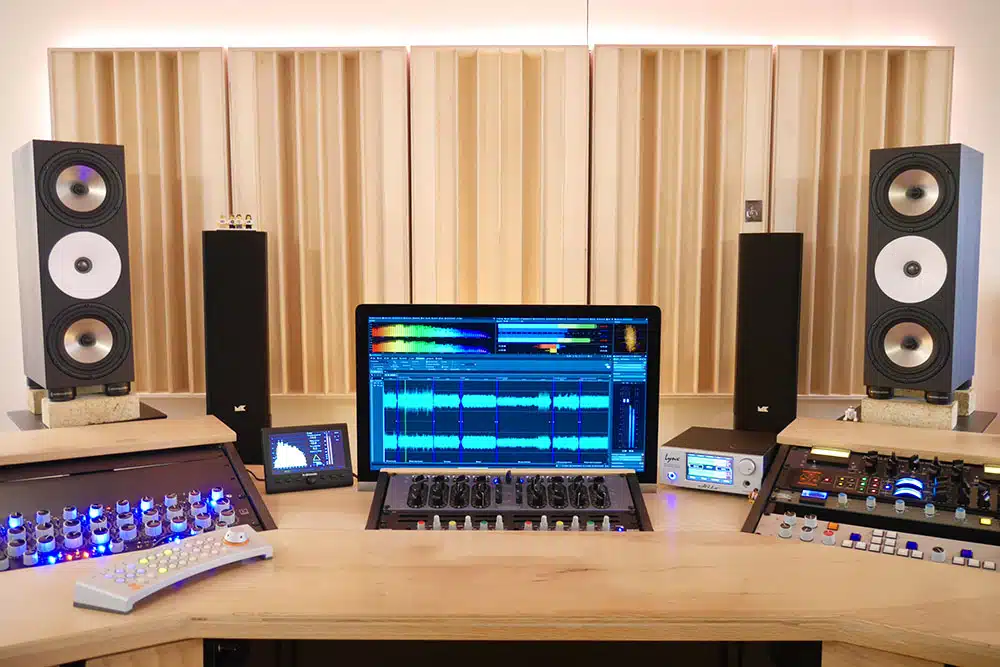
Diffusers scatter sound waves in different directions, reducing standing waves and flutter echoes without over-absorbing high frequencies.
They can help you maintain a sense of space and liveliness in your room, which can be super beneficial for recording space and mixing.
Diffusers come in various designs, such as quadratic residue, skyline, and fractal diffusers.
They can be made from materials like wood, plastic, or foam.
Place diffusers on your rear wall and other areas where additional diffusion is needed to balance your room’s acoustics.
-
Acoustic Treatment Tips
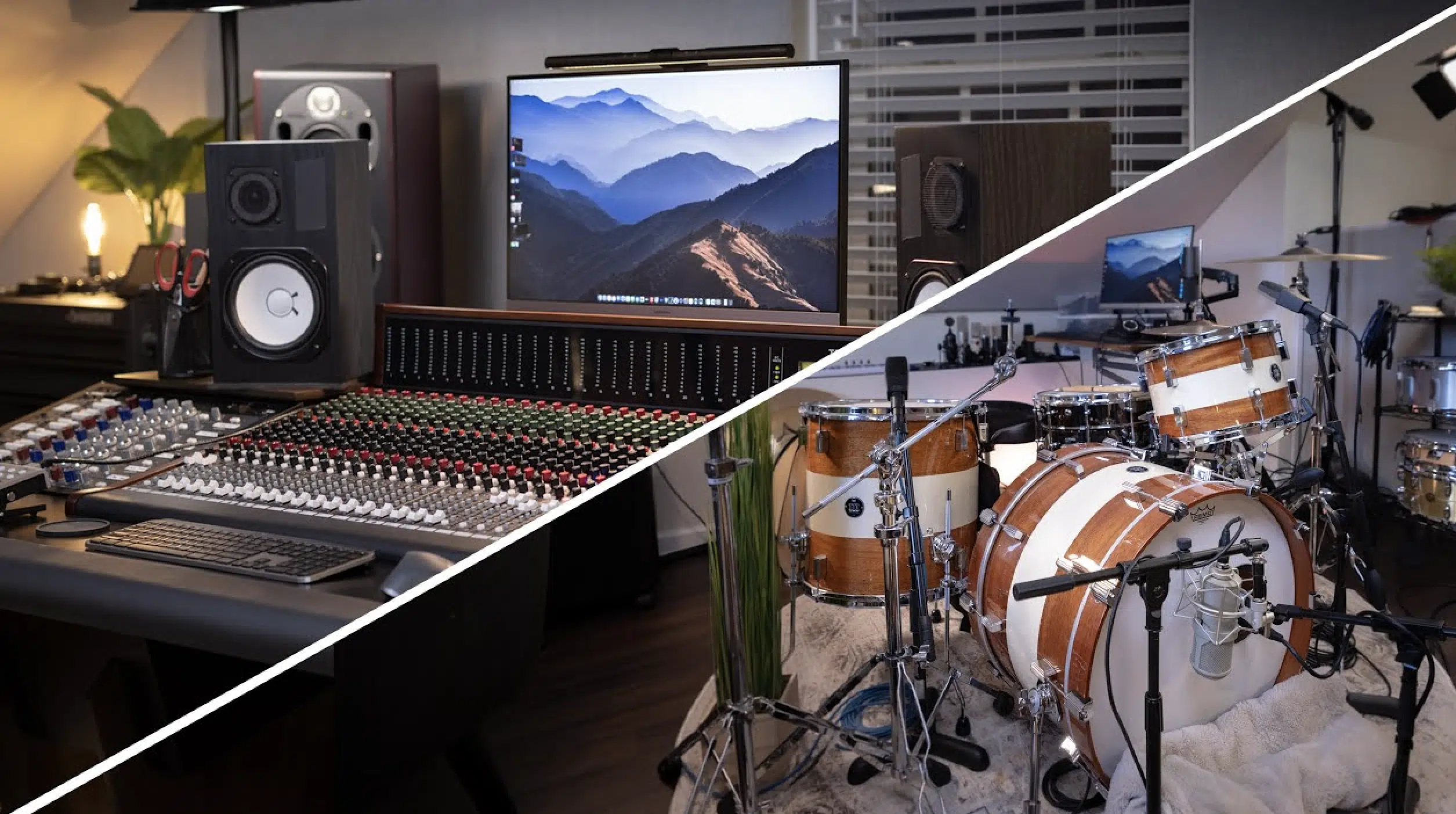
When applying acoustic treatment to your room, it’s essential to strike a balance between absorption and diffusion.
- Over-absorbing high frequencies can result in a dead-sounding room
- Too little absorption can cause excessive reverb and reflections
Use a combination of bass traps, acoustic panels, and diffusers to achieve an even frequency response and a controlled yet lively acoustic environment.
Additionally, consider using room analysis software like Room EQ Wizard to measure your room’s acoustics and identify any problem areas that need further treatment.
Audio Interfaces
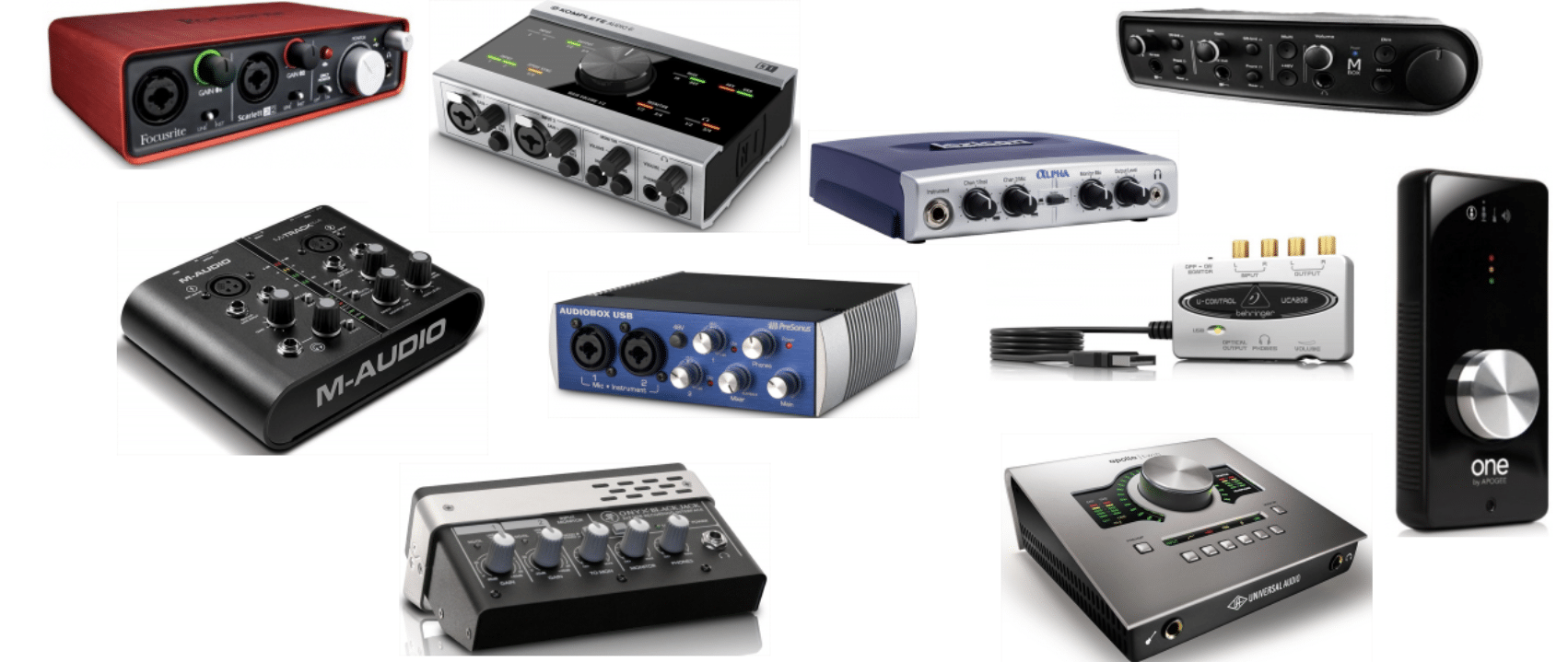
An audio interface is the heart of your home recording studio, serving as the bridge between your computer and your studio gear.
It allows you to connect microphones, instruments, and studio monitors to your computer, converting analog signals to digital (and vice versa) for recording and playback.
Choosing the right audio interface is crucial, as it directly impacts the quality and reliability of your recordings.
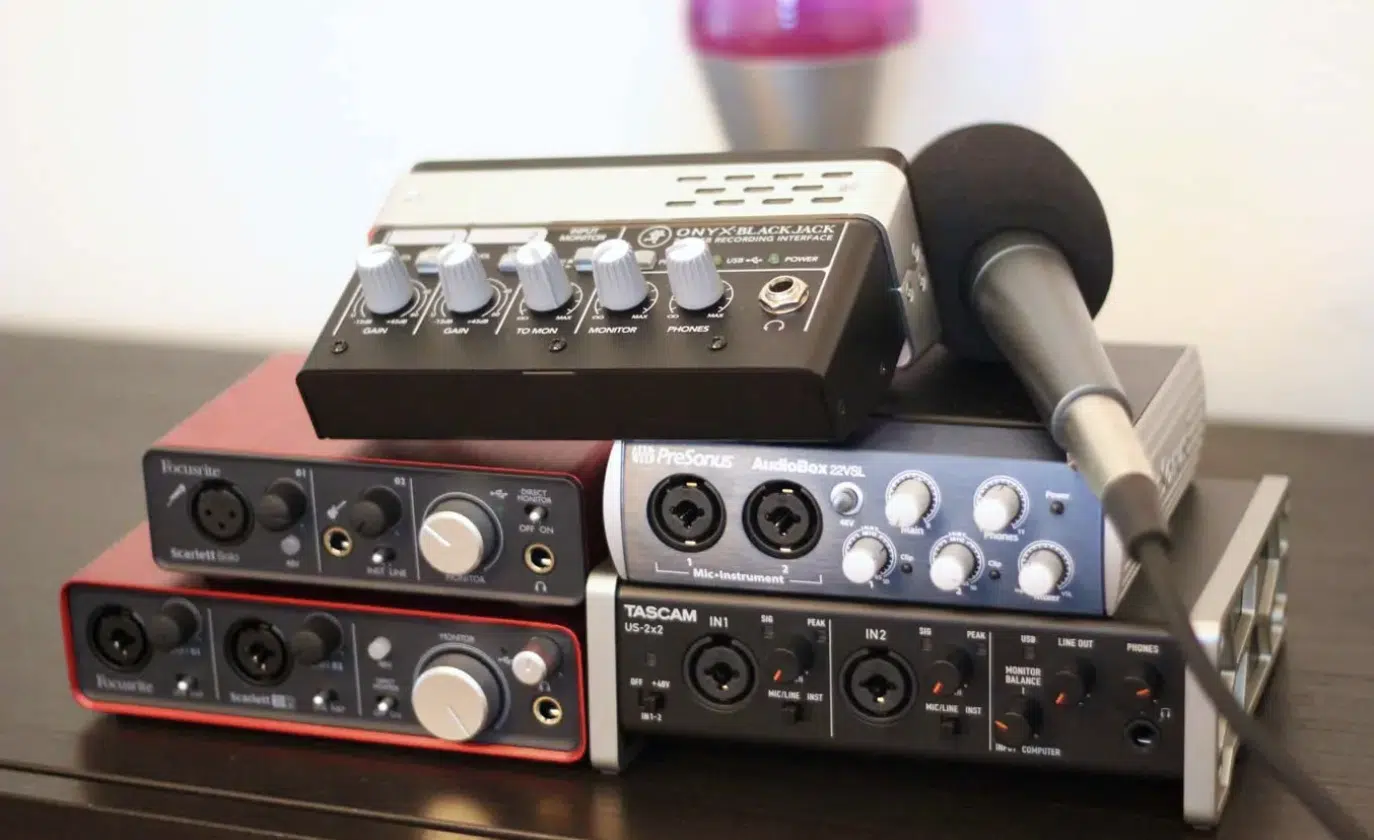
When selecting an audio interface, consider factors like the number of inputs and outputs, preamp quality, and digital conversion.
Make sure to look for an interface with high-quality analog-to-digital and digital-to-analog converters.
Some popular audio interfaces for studios include the Focusrite Scarlett series, Universal Audio Apollo series, Audient and iD series.
These interfaces offer a wide range of features, excellent sound quality, and varying price points to suit different budgets and needs.
When choosing an audio interface, consider your specific requirements and workflow preferences.
As well as compatibility with your chosen DAW and computer, naturally.
Studio Monitors
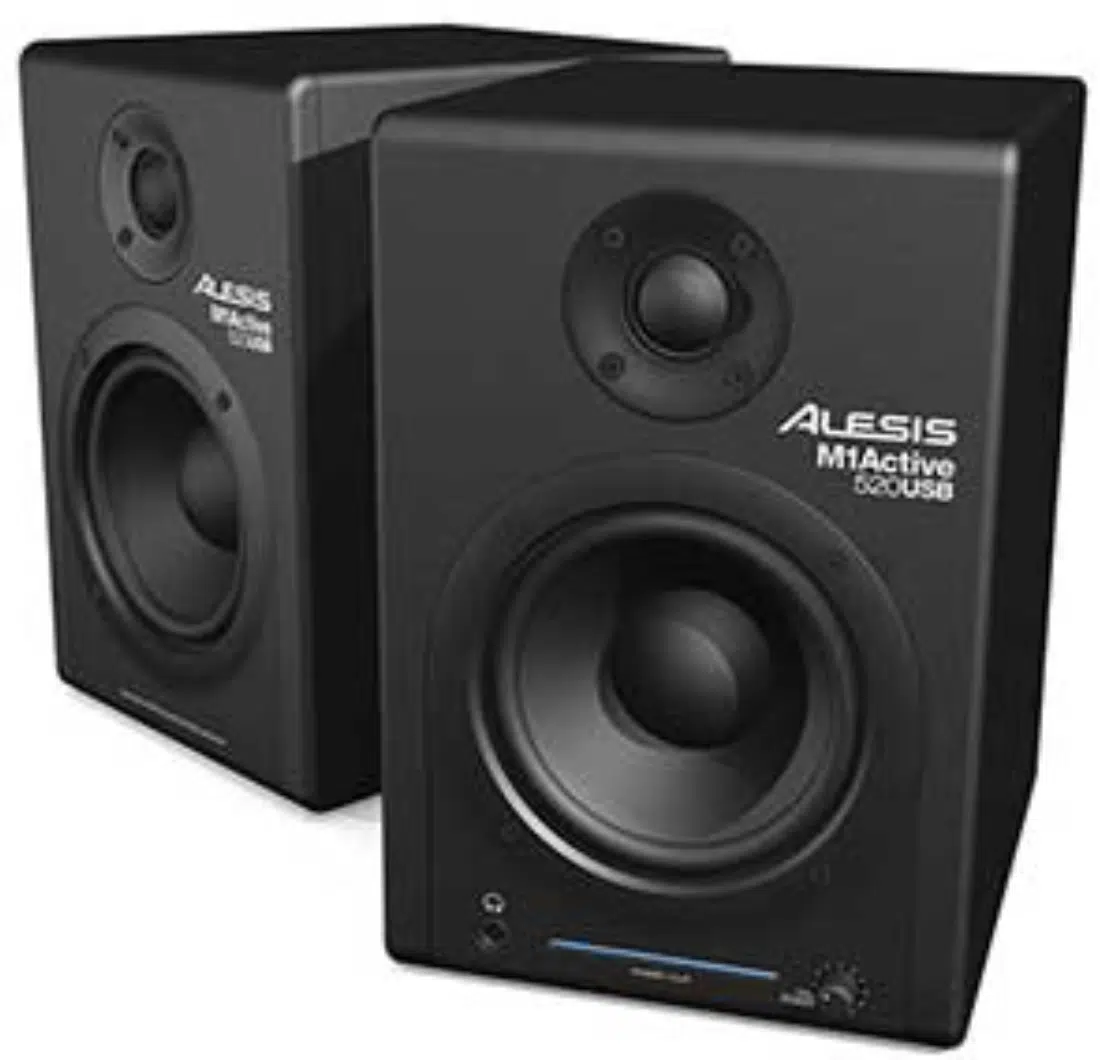
Studio monitors are absolutely essential for accurate audio playback and critical listening in your home studio.
They are designed to provide a flat frequency response, allowing you to hear your music as it truly is, without any coloration or distortion.
This accuracy is crucial for making informed decisions about your mixes and achieving professional-sounding results.
Choosing the right studio monitors is crucial for a perfect home recording studio because they provide an accurate representation of your audio.
They allow you to make informed decisions about mixing and mastering, which ultimately leads to a more professional-sounding outcome.
Plus, studio monitors ensure your tracks are well-balanced and translate appropriately across various playback systems.
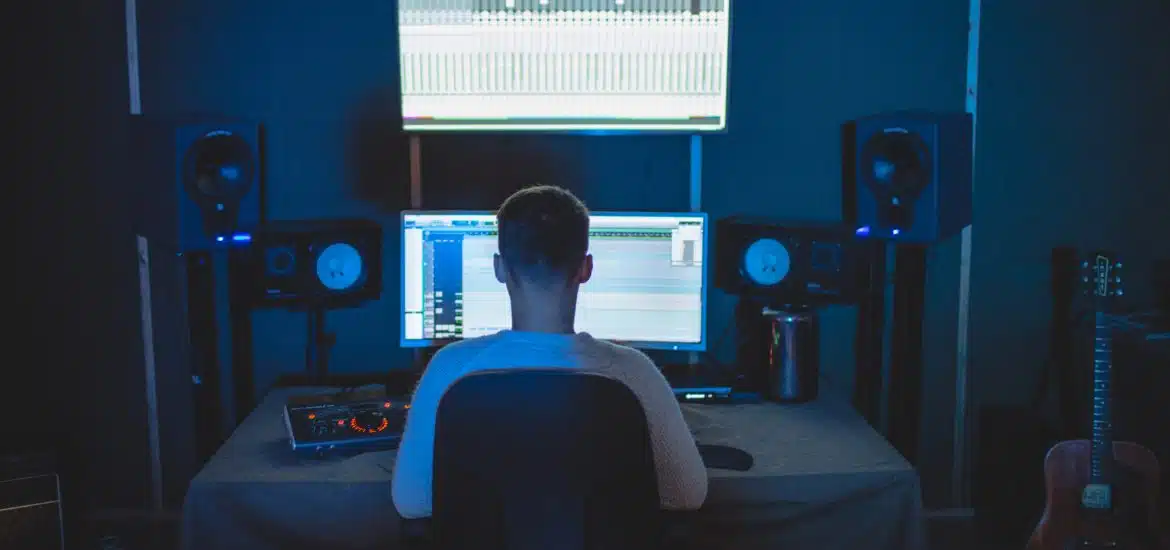
When selecting monitors for you home studio/home recording space, consider factors like size, power, and frequency response.
The size of your studio monitors should also be appropriate for your specific room.
- Smaller monitors (e.g., 5-inch woofers) are suitable for a small room.
- Larger monitors (e.g., 8-inch woofers) are better for bigger spaces.
The power of your studio monitors will affect their maximum volume and dynamic range.
It’s important to choose studio monitors with enough power to provide a clean, distortion-free sound at your desired listening level.
Finally, consider the frequency response of your studio monitors, as this will impact the accuracy of your audio playback across the frequency spectrum.
Active vs. Passive Monitors
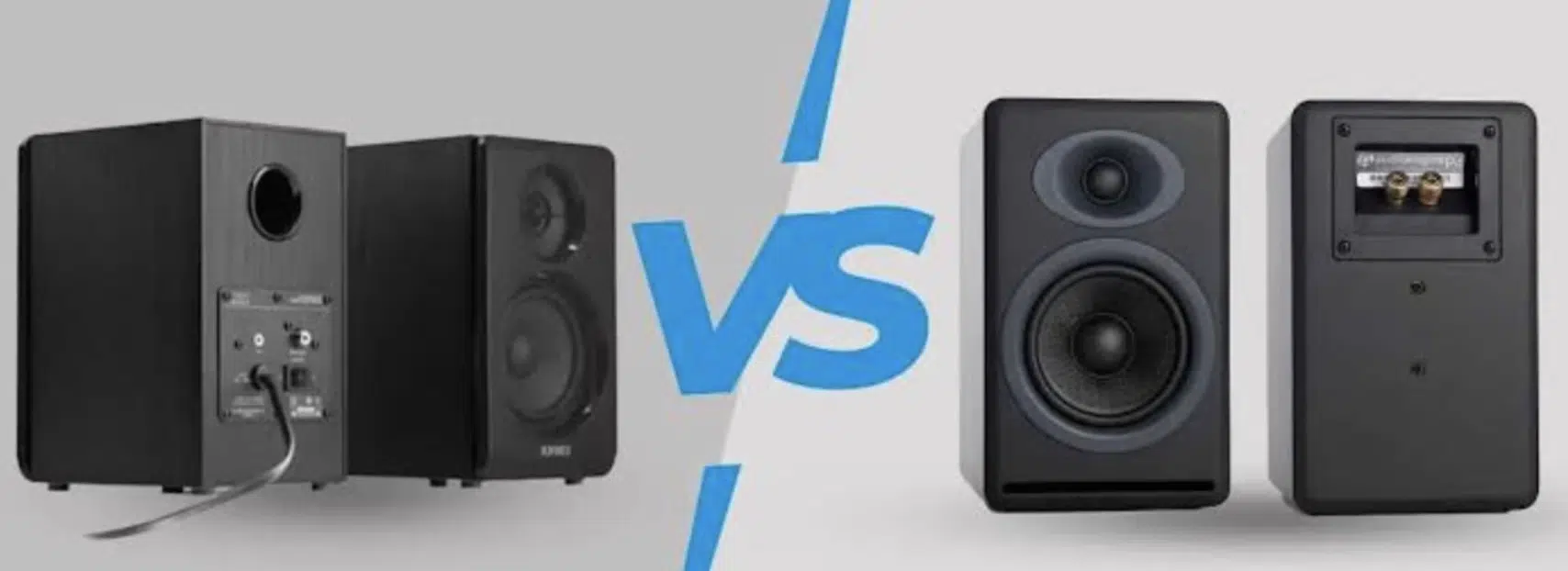
There are two types of monitors:
- Active Monitors
- Passive Monitors
Active monitors have built-in amplifiers, making them more convenient and easier to set up.
Passive monitors, on the other hand, require external amplification, which can provide more flexibility in terms of power and sound customization.
Most bedroom studios opt for active monitors due to their ease of use and lower overall cost.
Let’s break down both options a little further, so you’ll be able to choose the ideal pair for your home recording studio.
-
Active Monitors
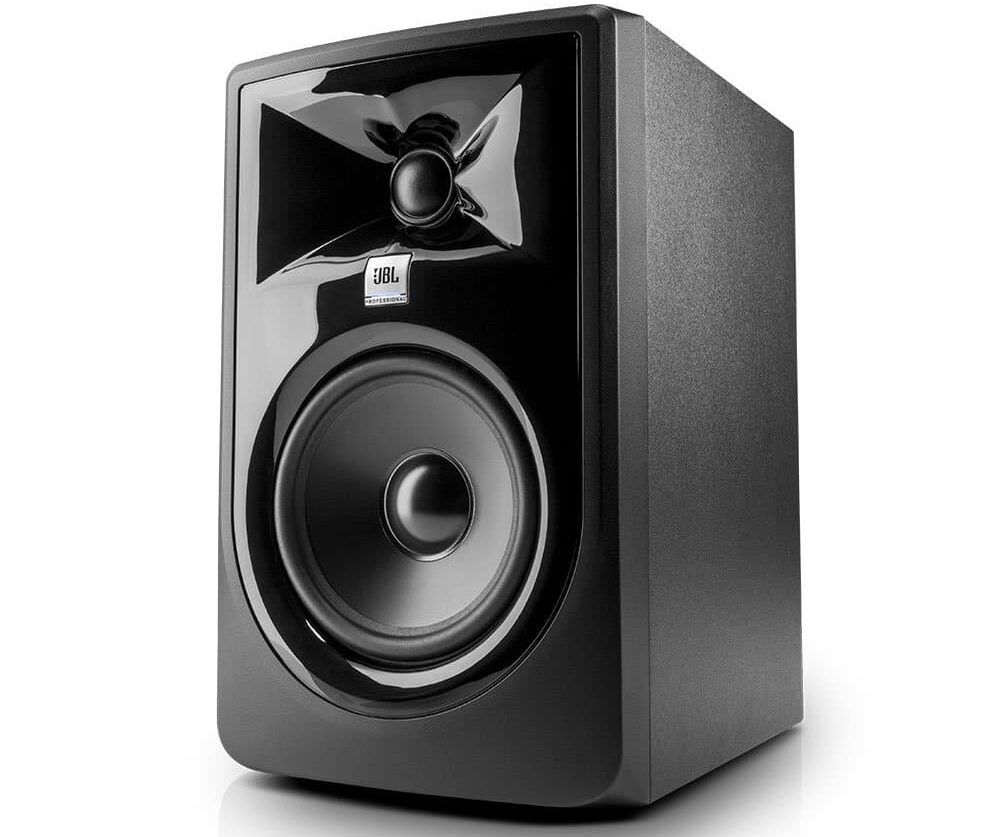
Active monitors are self-powered, meaning they have built-in amplifiers, eliminating the need for an external power amp.
This feature ensures that the speaker components and amplifiers are specifically matched and optimized for maximum performance.
Therefore, they result in a more accurate and consistent sound.
Active monitors offer several advantages, including ease of ease of setup, more accurate frequency response, and reduced risk of distortion.
Additionally, they can save space in your studio, as there’s no need for an external amp.
Some popular active studio monitors include the KRK Rokit series, Yamaha HS series, and Adam Audio AX series.
-
Passive Monitors
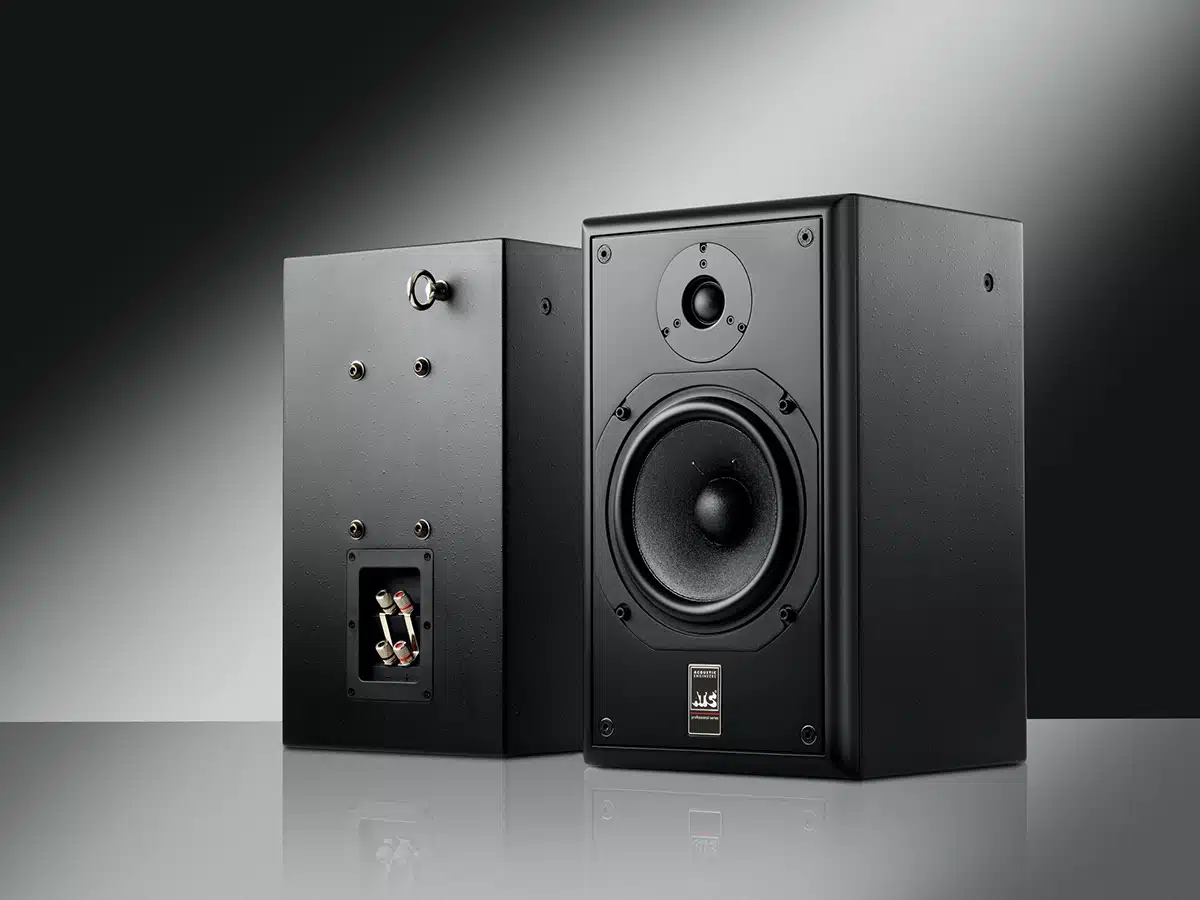
Passive monitors require an external power amplifier to drive the consumer speakers.
Meaning, the amplifier is responsible for powering the speaker components and determining the overall sound quality of the monitor.
They offer flexibility in choosing and pairing the amplifier and speakers to suit your specific needs and preferences.
While passive monitors may involve a more complex home studio setup and additional components, they provide the opportunity for customization and fine-tuning of your monitoring system.
By selecting the ideal combination of speakers and amplifiers, you can achieve a tailored sound that matches your unique listening preferences.
Microphones
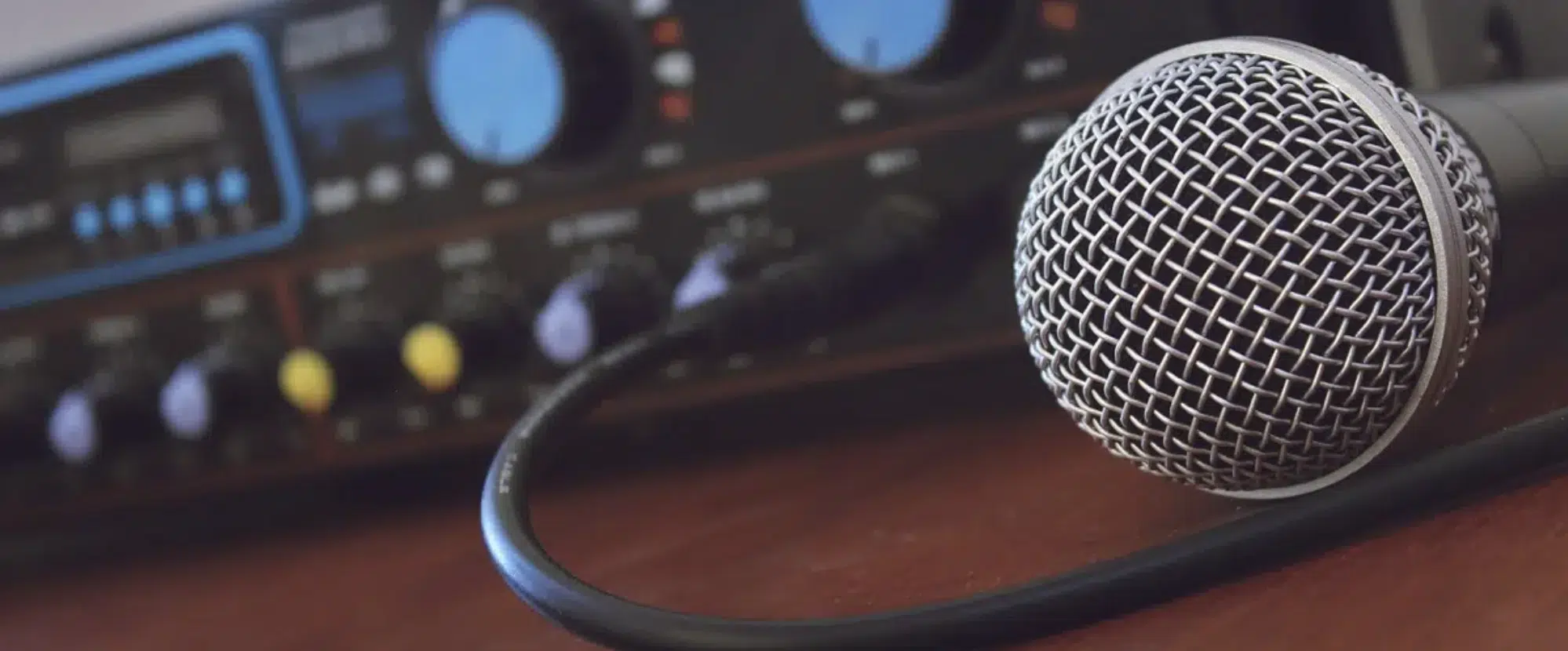
There are many different types of microphones, each with unique characteristics and applications.
The two most common types of microphones used in a home recording studio are condenser mics and dynamic mics.
A high-quality microphone is essential for capturing professional-sounding recordings in your home recording studio.
Therefore choosing the right one for your unique workflow and home recording studio setup is crucial.
-
Condenser Microphones
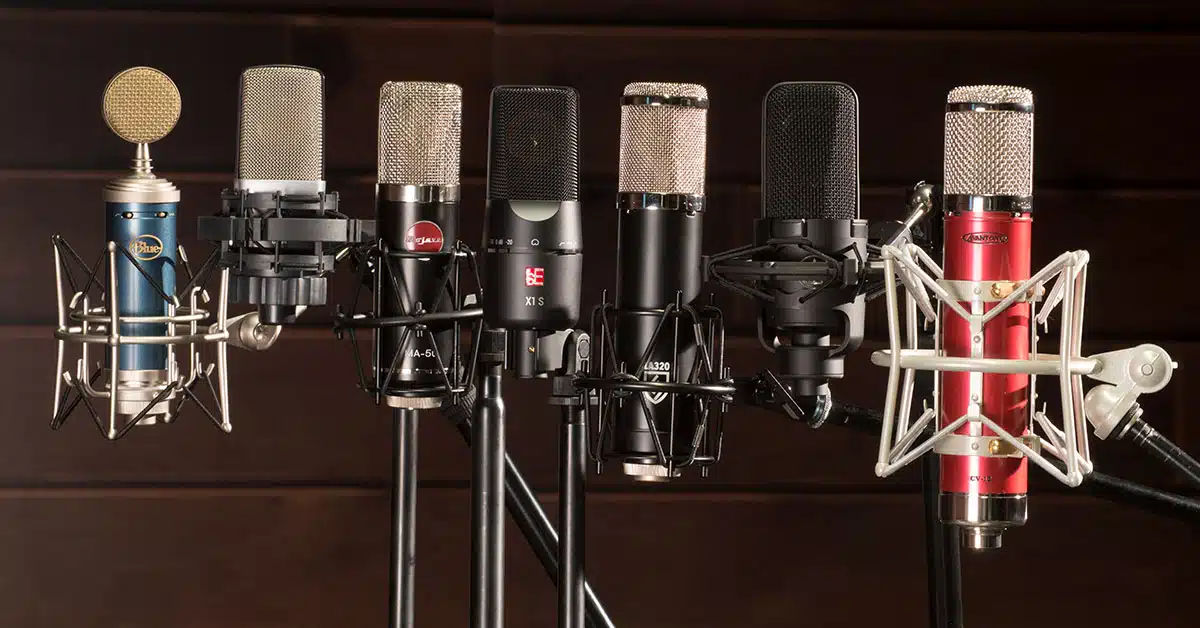
Condenser microphones are known for their sensitivity and accuracy, making them ideal for recording vocals and acoustic instruments.
They require phantom power, which is typically provided by your audio interface or an external preamp.
Condenser microphones come in various designs, such as large-diaphragm, small-diaphragm, and tube condensers, each with its own unique sound characteristics.
- Large-diaphragm condenser mic 一 Known for its warm and detailed sound. They are versatile microphones that excel at capturing vocals, acoustic instruments, and various studio applications.
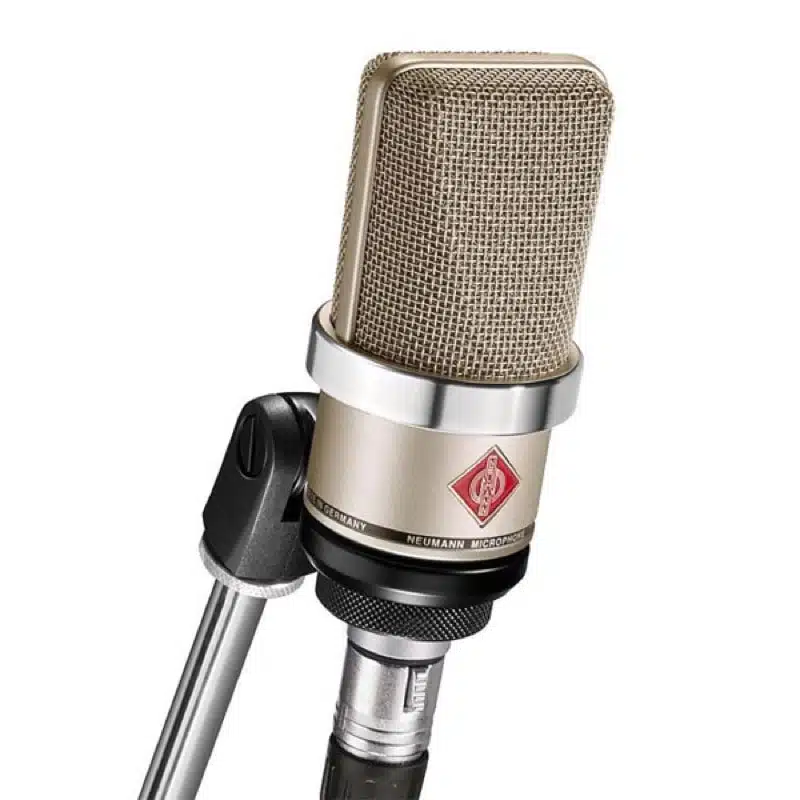
- Small-diaphragm condenser mic 一 Offer a more accurate and detailed sound. Ideal for capturing fast transients and is commonly used for drum overheads, acoustic guitars, and orchestral recordings.
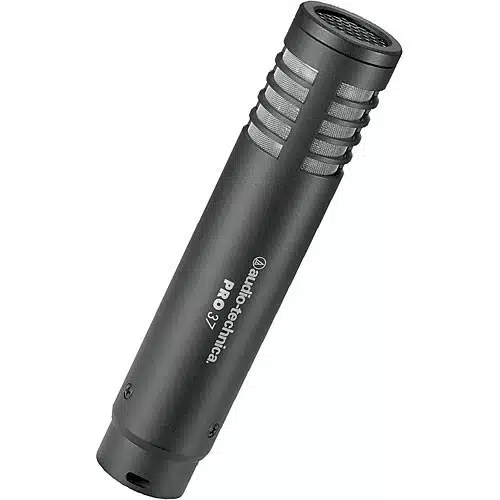
- Tube condensers 一 Combine the sensitivity and detail of condenser mics with the warmth and character of tube circuitry. This type of condenser microphone is highly sought-after for its rich, vintage tone; often used on vocals and acoustic instruments.
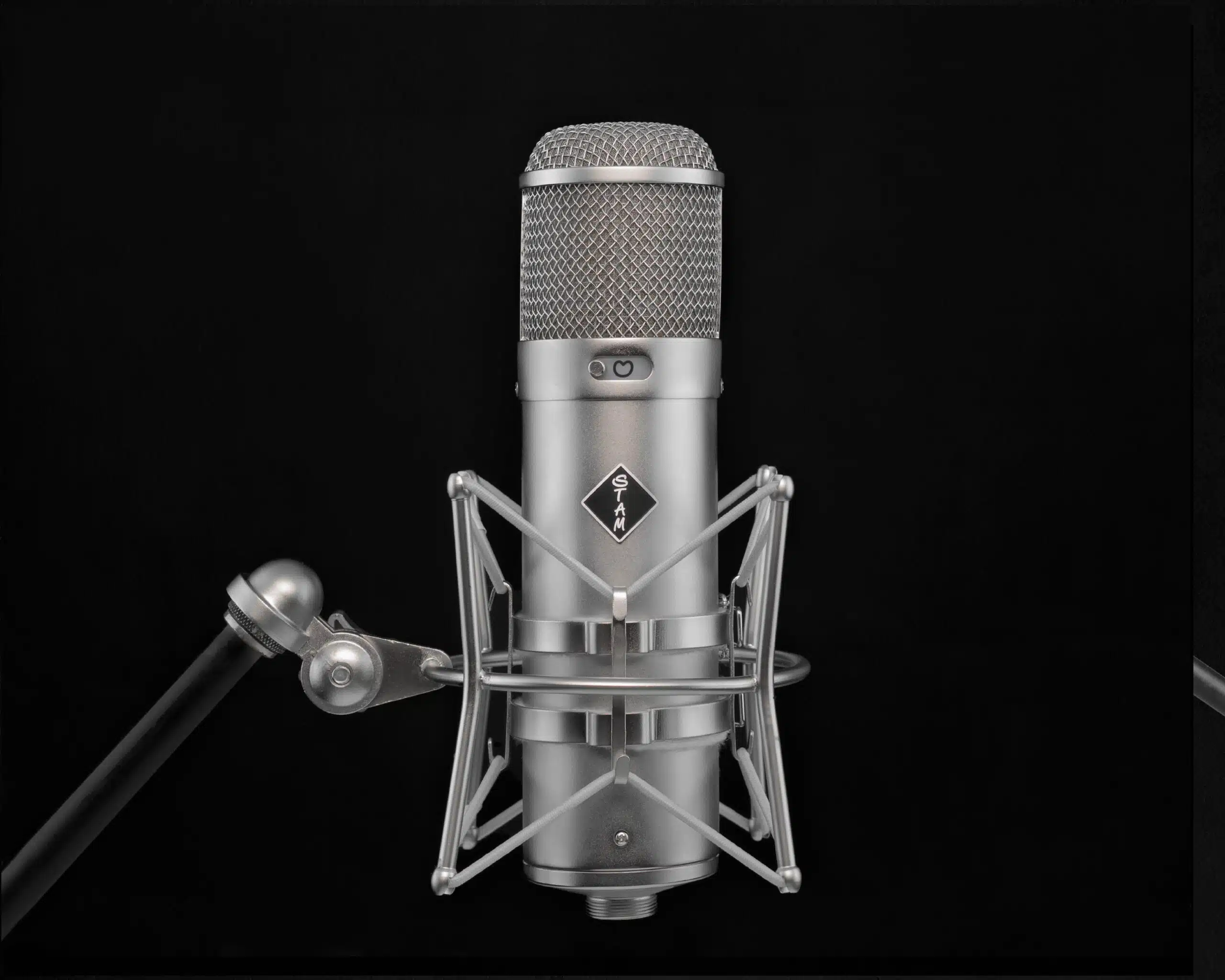
- Dynamic Microphones
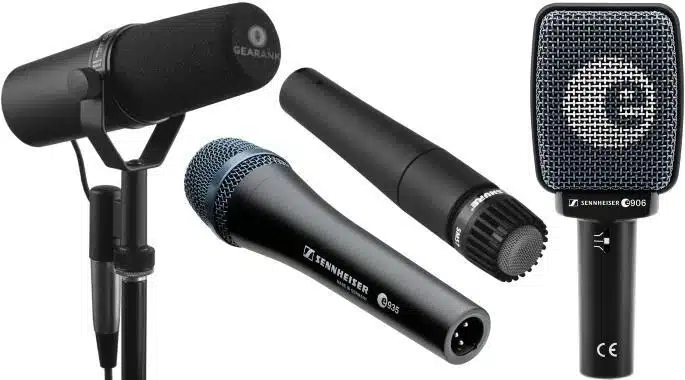
Dynamic microphones are more robust and durable compared to condenser microphones.
They are great for recording loud sources like drums, guitar amps, and other high-SPL instruments.
Dynamic mics are particularly well-suited for home studios due to their ability to handle high sound pressure levels and their ability to minimize the impact of room acoustics on the recording.
A dynamic mic does not require phantom power and is generally more affordable than condenser microphones. If you’re looking to save money, they’re great.
MIDI Controllers
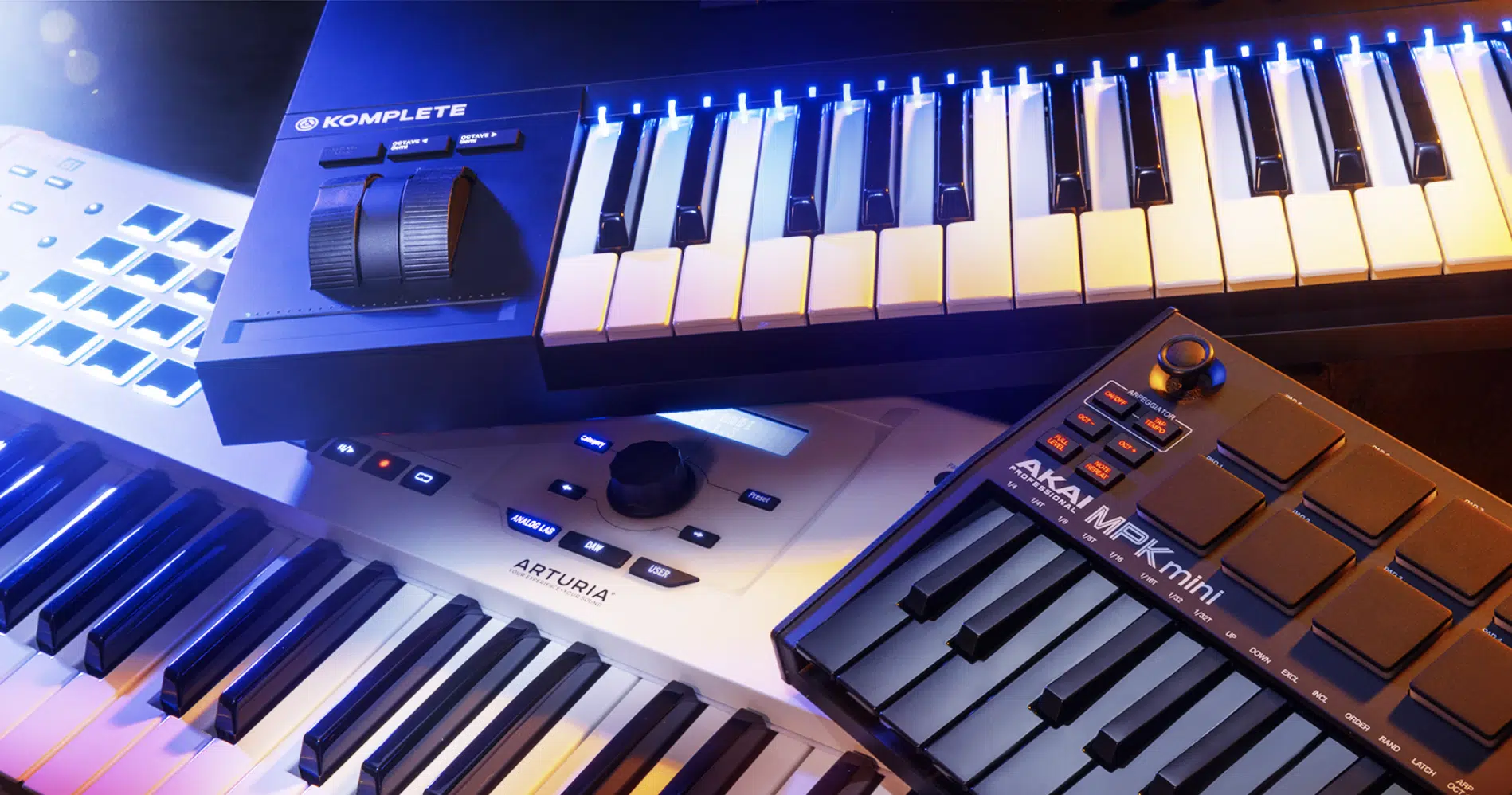
A MIDI controller/MIDI keyboard is an essential tool for any music production master.
They allow you to play virtual instruments, control DAW (digital audio workstation) parameters, and create more expressive and dynamic performances.
MIDI controllers come in various forms, such as a MIDI keyboards, drum pads, and control surfaces, and can significantly enhance your workflow and creativity in the studio.
Selecting a MIDI controller (and this applied to MIDI keyboards, too) is very important when building your home recording studio, as you’ll spend an excessive amount of time on it.
When choosing a MIDI controller/MIDI keyboard for your unique needs, consider factors like size, functionality, and compatibility with your DAW.
MIDI keyboard controllers are the most common type, ranging from compact 25-key models to full-sized 88-key keyboards.
They often feature additional controls like knobs, faders, and drum pads for added versatility.
Drum pad controllers are designed for creating beats and triggering samples, offering a more tactile and responsive playing experience.
Control surfaces are primarily used for mixing and digital audio workstation control, providing hands-on access to essential functions like volume, pan, and automation.
MIDI controllers and MIDI keyboards are often lumped together, and that’s fine.
However, there are some notable key differences between MIDI controllers and MIDI that you should double check, found here, that most people don’t know.
Headphones
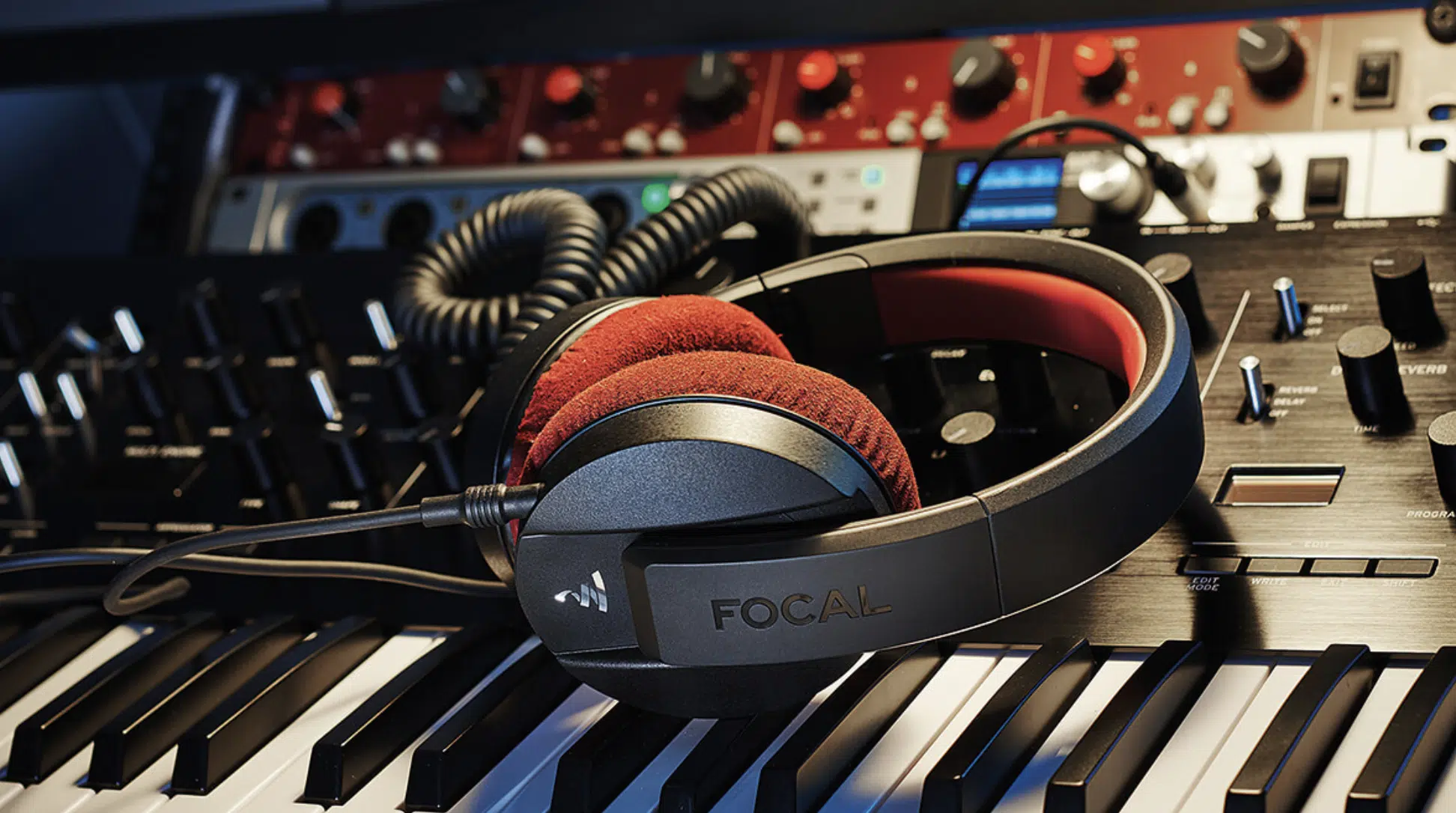
Choosing a decent pair of studio headphones is vital when building your dream home studio for a variety of reasons.
They offer an alternative listening perspective and allow you to identify (and put a stop to) potential issues in your mix that may not be as evident on studio monitors.
Plus, they enable you to work on your masterpieces without disturbing others, especially if you live in a shared space or have particularly nosy neighbors.
Studio headphones are designed to offer a flat response and excellent isolation, making them ideal for critical listening, tracking, and when you mix music.
Open-Back Headphones vs. Closed-Back Headphones
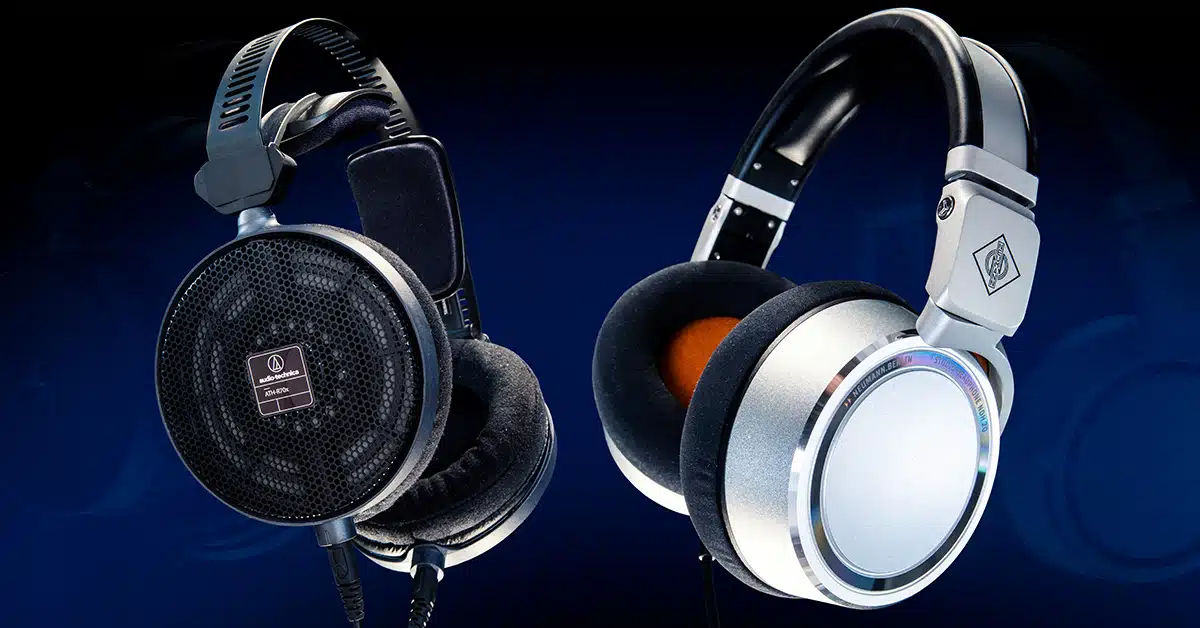
There are two main types of studio headphones: open-back headphones and closed-back headphones.
Open-back headphones have a more natural and spacious sound, making them ideal for mixing and critical listening.
They tend to be more breathable and comfortable for extended listening sessions and mixing purposes.
That is why they’re so popular amongst producers who spend long hours in their home studio making professional quality music.
However, they provide less isolation and can cause sound leakage, which might not be suitable for recording.
Closed-back headphones offer excellent isolation and minimal sound leakage, making them great for tracking and recording in your home recording studio.
Their ability to provide a high degree of passive noise reduction can also be beneficial if you work in a rather noisy environment.
This way, you can focus on your work without distractions from external sounds, whether it’s a free copy of a CD playing or a door slamming.
However, their sound can be less accurate and more fatiguing during long mixing sessions.
Consider factors such as time spent wearing them, comfortability, and accuracy when choosing your ideal set of headphones.
DAWs
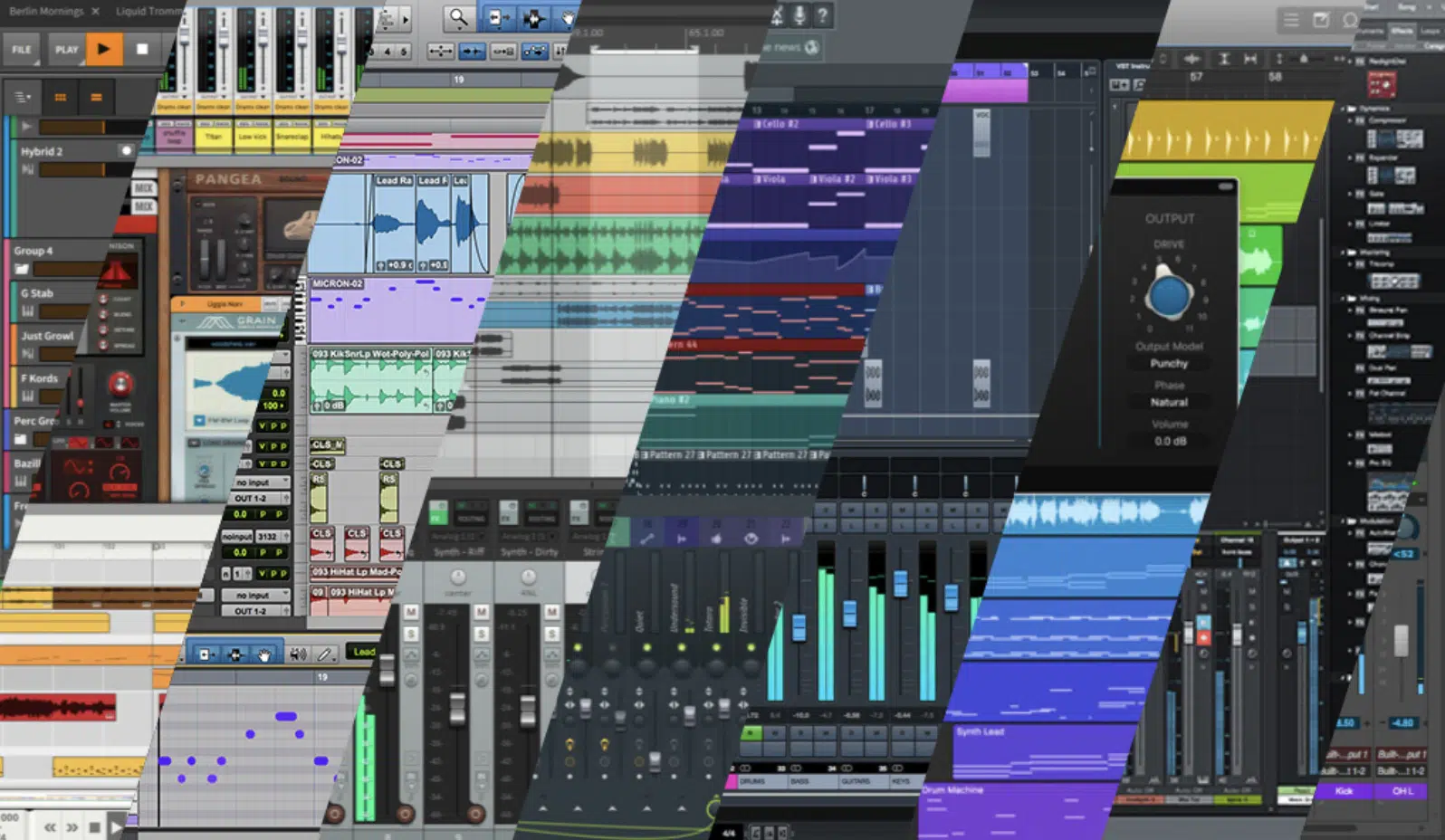
A Digital Audio Workstation (DAW) is the central hub of your home recording studio.
It provides you with a platform for recording, editing, mixing, and mastering your music.
When selecting a DAW, consider factors like compatibility with your computer and audio interface, your preferred workflow, and the availability of built-in instruments and effects
Each digital audio workstation has its own unique workflow, features, and capabilities.
Therefore, it’s essential to choose one that aligns with your specific needs, preferences, and budget.
You can’t have a complete home recording studio package without o
Popular DAWs
Each digital audio workstation has its pros and cons, so choosing the right digital audio workstation depends on your personal preferences and workflow requirements. Let’s break down some of the most popular digital audio workstation options.
- Ableton Live 一 Known for its intuitive interface and seamless integration with hardware controllers, this music software is a favorite among electronic music producers and live performances.
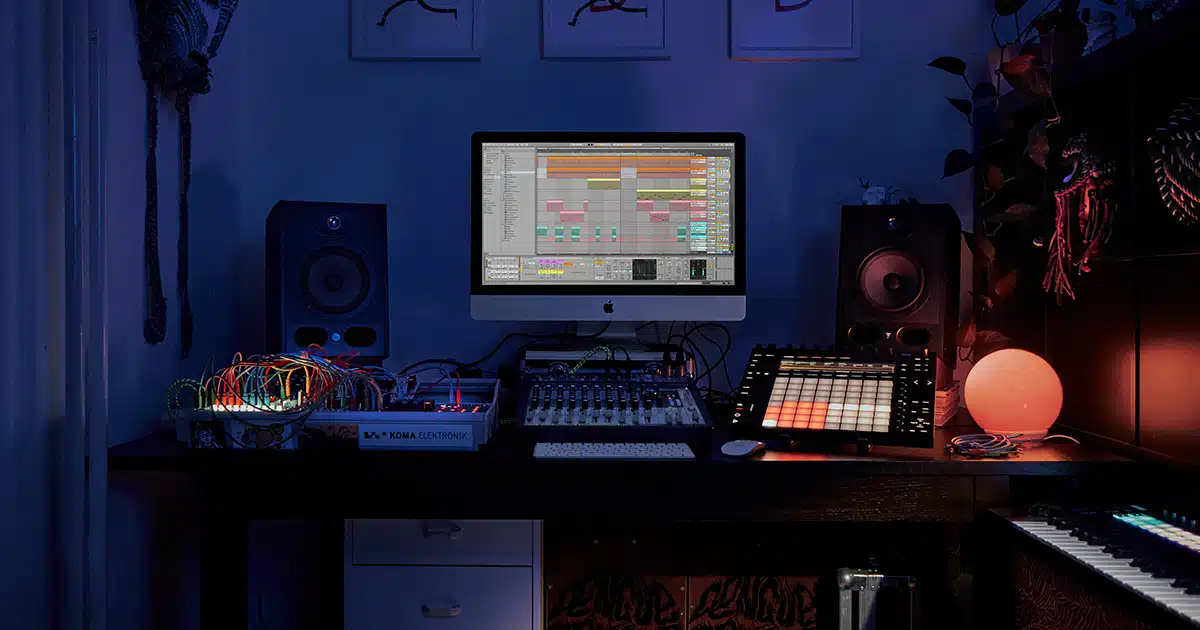
- FL Studio 一 With its pattern-based workflow, FL Studio is a popular choice for beatmakers and hip-hop producers, offering a wide range of built-in instruments and effects. Free version available.
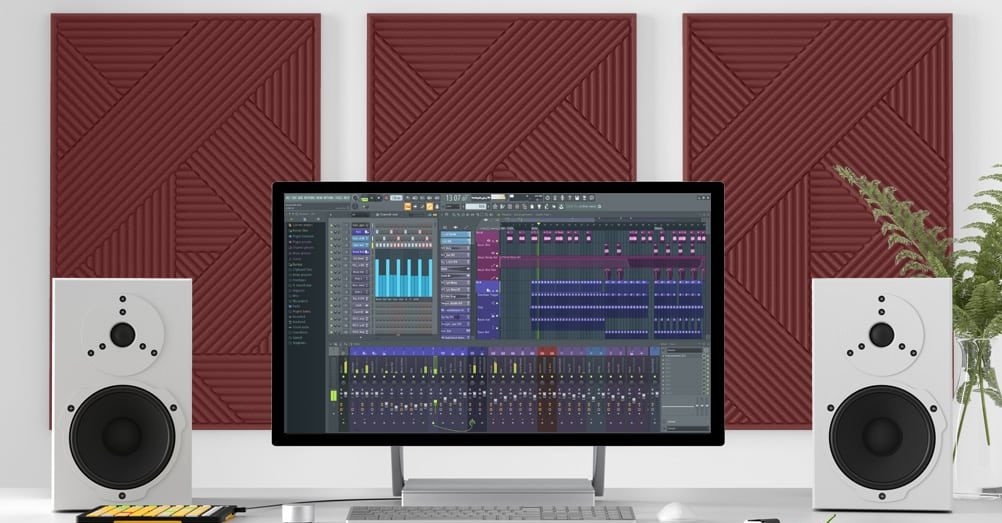
- Logic Pro 一 Exclusively available for macOS, Logic Pro is a comprehensive DAW with virtual instruments, plugins, and professional features, making it a great choice for any home recording studio.
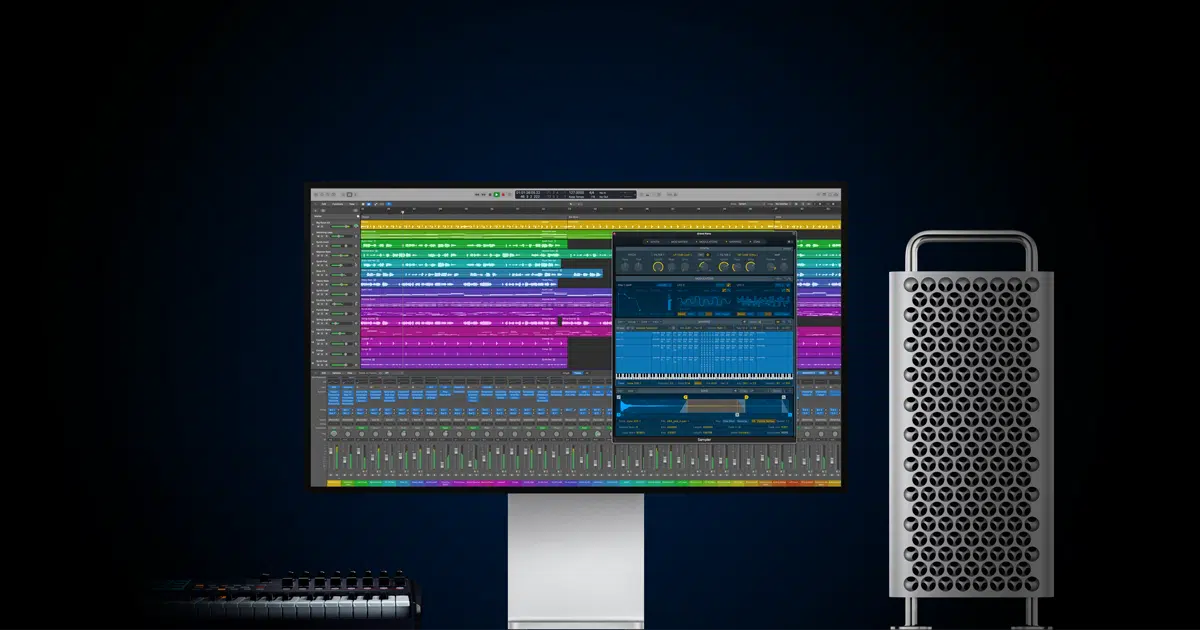
- Pro Tools 一 Widely used in professional recording studios, Pro Tools is the industry standard for audio recording, editing, and mixing, offering advanced features and compatibility with a wide range of hardware.
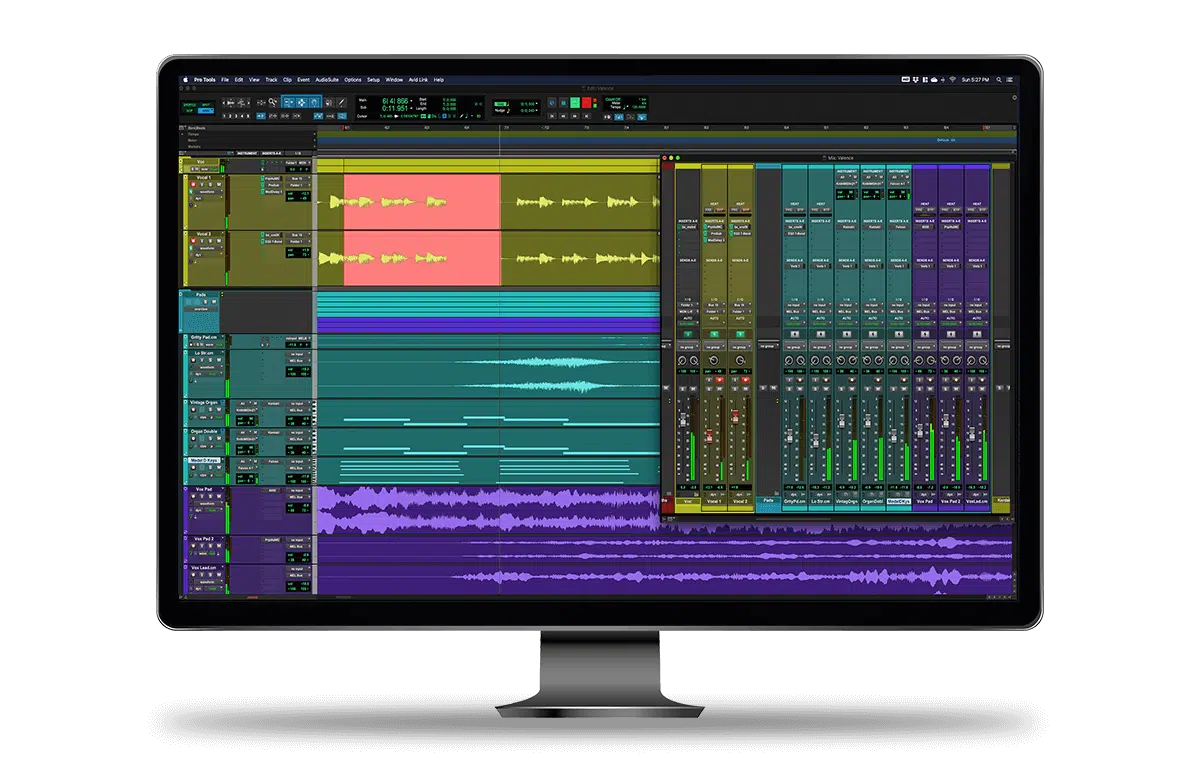
- Cubase 一 With its powerful MIDI capabilities and comprehensive audio editing tools, Cubase is a versatile DAW suitable for various music genres (including electronic music, tech house, hip-hop) and music production tasks.
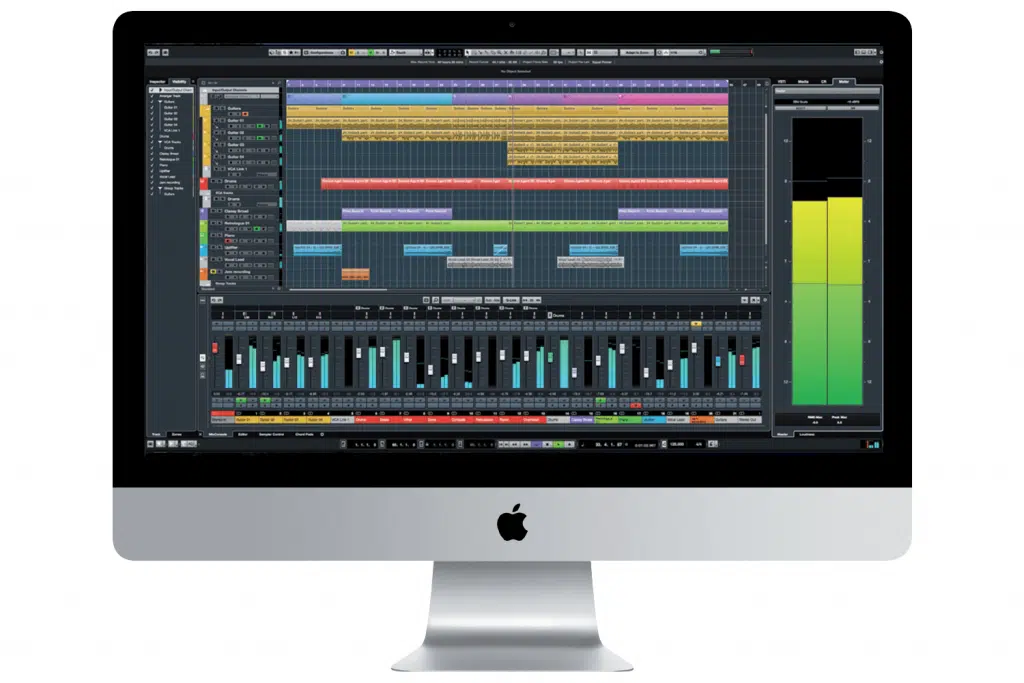
They all offer a wide range of features, extensive plugin support, and a robust user community; making them excellent choices for multiple musicians.
Studio Furniture
Your home studio, whether it’s your first studio or your hundredth, is where you’ll spend the majority of your time. If it’s uncomfortable, crowded, or just overall unappealing to you, going to be unpleasant. Plus, it could hinder your creativity altogether when in that home studio/home recording space. It’s important to fill it with pieces that complement your overall workflow and vibe.
- The Right Desk
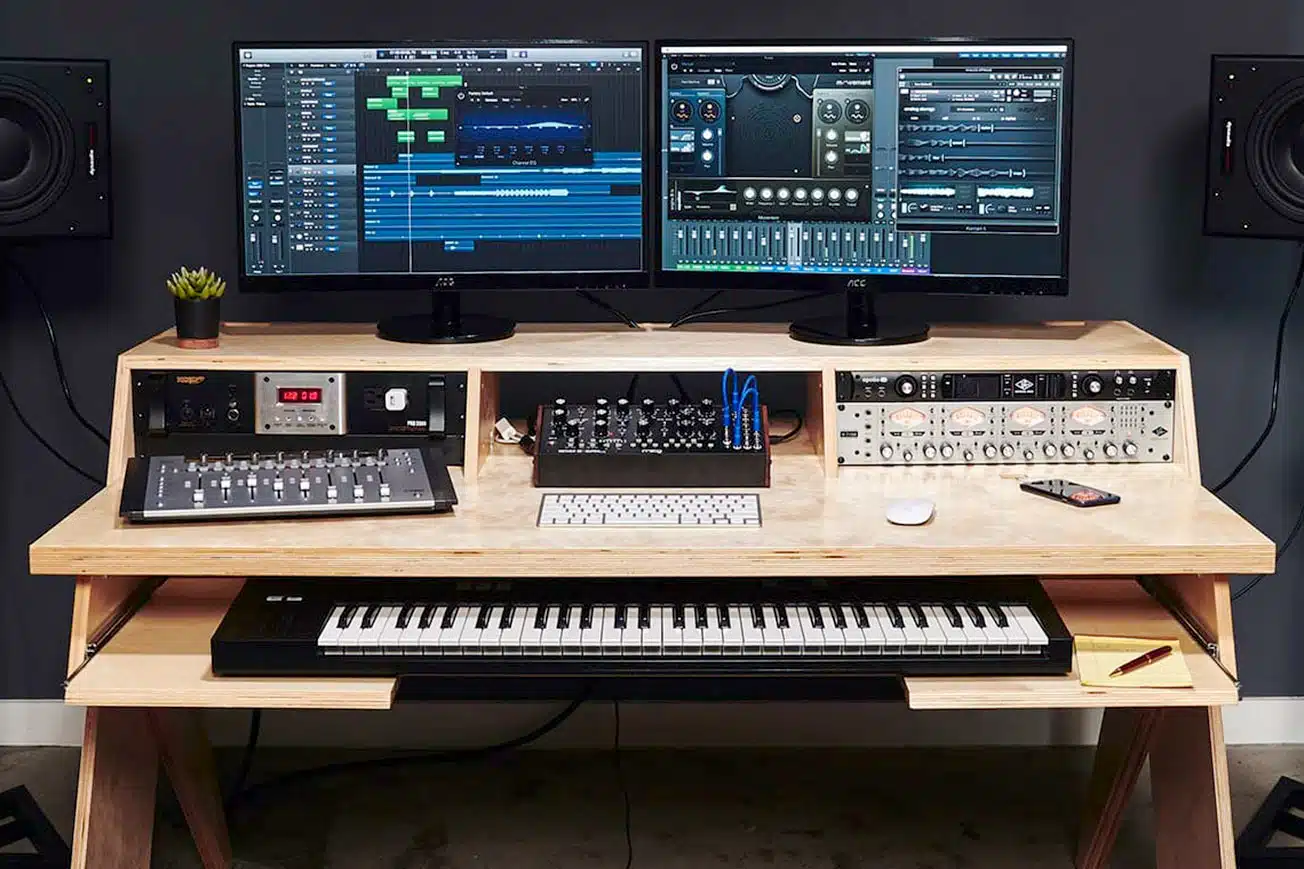
Your studio desk is the centerpiece of your home recording studio, providing a stable and organized workspace for your gear and equipment, whether you have a significant amount or a few pieces.
It should fit your room perfectly and support your recording equipment.
When selecting a desk, consider factors like size, ergonomics, storage capacity, functionality, and comfort.
Ensure the desk is large enough to accommodate your audio interface, monitors, MIDI controllers, and other essential gear.
Also, make sure it offers ample legroom for comfortable seating.
Some desks also include built-in racks for your other gear, a keyboard stand, cable management systems, and adjustable monitor stands for optimal positioning.
Choose one that matches your unique needs and checks off everything you’re looking for.
- The Ideal Chair
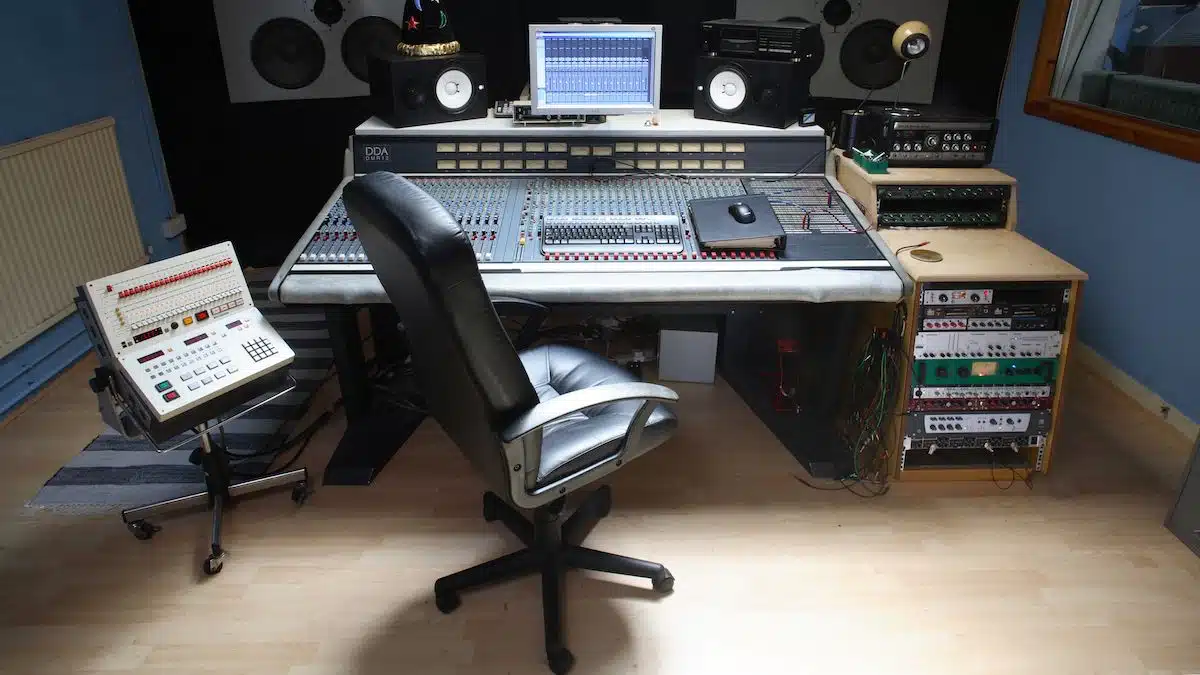
Home recording studios wouldn’t be complete without a comfortable chair, I mean, that’s a give, right?
They’re essential for long hours of music production and creation.
It’s where you’ll be sitting most of the time, so if it’s uncomfortable, you’ll never be able to function at your highest capacity.
Look for a music production chair with good lumbar support, adjustable height, and comfortable padding.
Investing in a high-quality ergonomic chair can help prevent back pain, fatigue, and other discomforts associated with extended sitting sessions.
Not only will a bad chair make you miserable, but it could also cause long-term health effects as well.
- Studio Monitor Stands
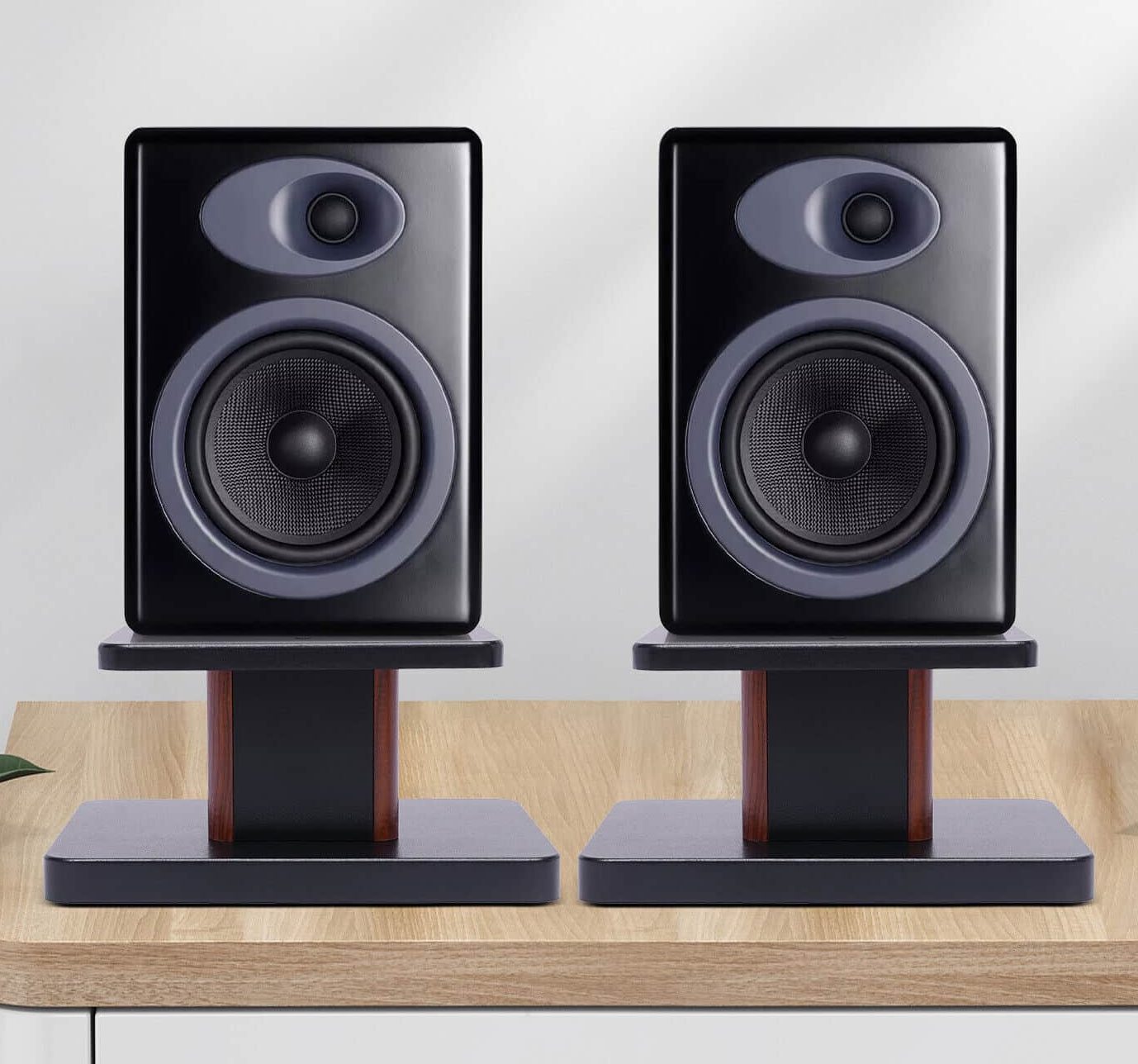
Investing in dedicated studio monitor stands can improve your monitoring accuracy and the overall acoustics of your room.
Stands position your monitors at the optimal height and angle within your home recording studio.
They help ensure the sound reaches your ears directly and without reflections from your desk or other surfaces.
Choosing the right monitors can also contribute to reducing ear fatigue during long studio sessions.
Monitors with accurate frequency response and minimal distortion allow you to work at lower volume levels without compromising the clarity of your mix.
This will result in a more comfortable and sustainable working environment for your home studio setup so you won’t have to invest in expensive studio time.
Also, consider using isolation pads or decouplers to minimize vibrations and improve the clarity of your home recording studio equipment.
- Rack Units for Outboard Gear
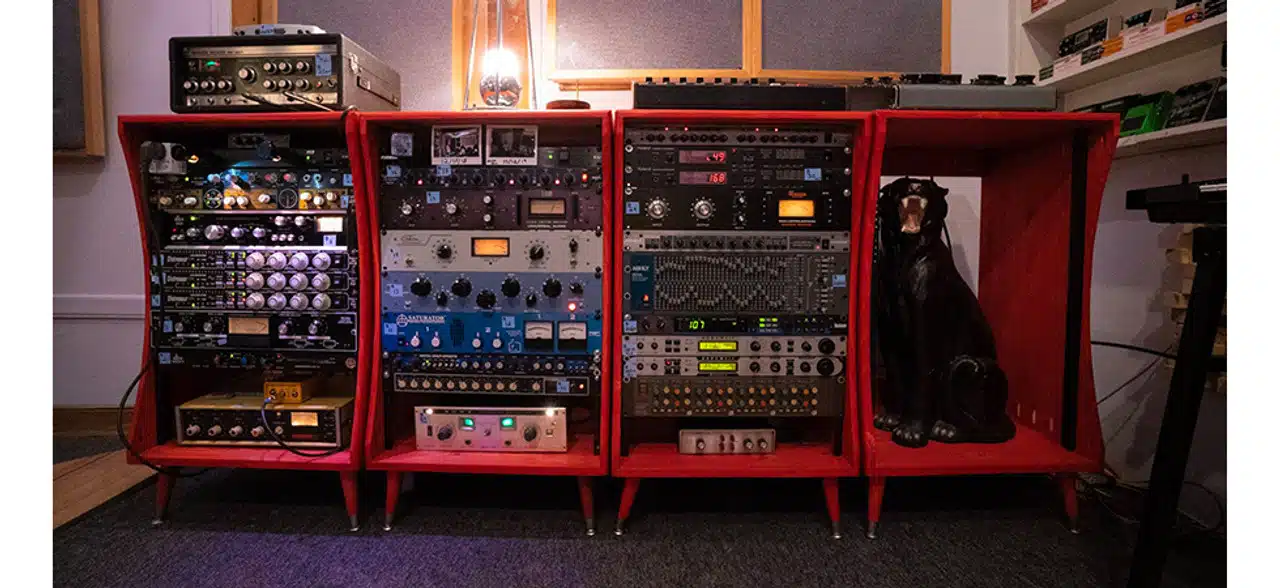
If you plan to use outboard gear, such as external preamps, compressors, or EQs, you’ll need a rack unit to house and organize your equipment.
If you’re organized ahead of time, you’ll never have to worry about moving things around, but try not to place them in natural light.
You’ll have more time to focus on the real goal: making music.
Rack units come in various sizes and styles, from tabletop designs to standalone units.
When choosing a rack unit, consider factors like the number of rack spaces you’ll need in your home studio, as well as the overall build quality and durability of the unit.
- Cable Management
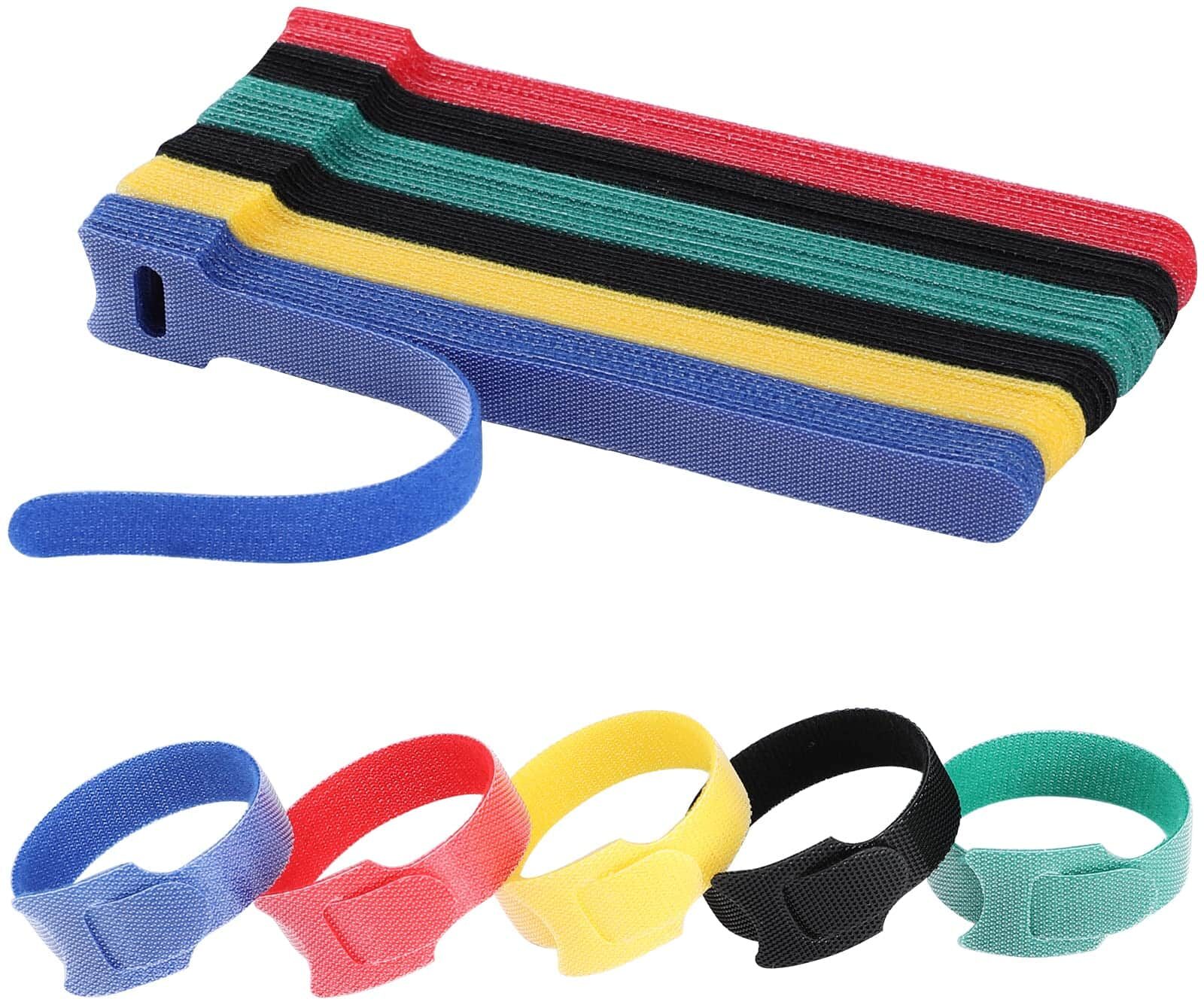
Home recording studios come with a lot of excess cables.
Keeping them organized is essential for maintaining a clean and efficient workspace.
Cable management solutions, such as cable ties, cable organizers, and cable trays, can help you keep your cables neat and easily accessible.
A well-organized cable setup not only looks professional but can also save you time and frustration when troubleshooting or reconfiguring your first studio setup.
Essential Accessories
In addition to your primary studio gear, there are several essential accessories that can make your home studio more efficient, organized, and comfortable. These additions will help you generate a seamless and enjoyable music production experience.
-
Cables
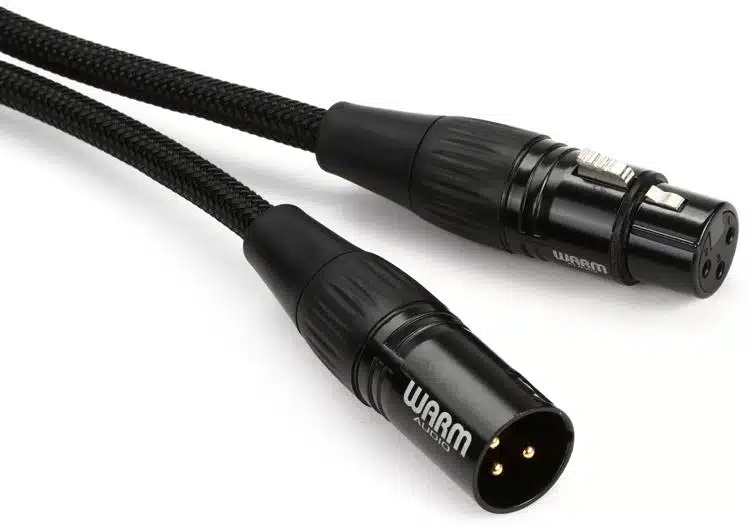
High-quality cables are essential for ensuring reliable connections and optimal signal transmission in your home recording studio.
Make sure to invest in good-quality XLR cables, TRS cables, and MIDI cables, and have spares on deck for emergencies.
Additionally, consider using cable labels or color-coded cables.
This will make it easier to identify your connections quickly and efficiently.
-
Pop Filters & Microphone Stands
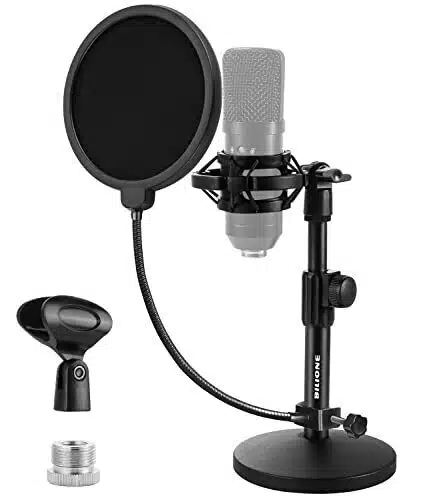
When recording vocals, a pop filter is an essential accessory for reducing plosive sounds and protecting your microphone from saliva (basically, pop filters are a must).
Choose a pop filter that is compatible with your microphone and easily attaches to your microphone stand.
Speaking of microphone stands, invest in sturdy, adjustable stands that can accommodate various recording situations and microphone positions.
Plosive sounds create a burst of air that can overload the microphone diaphragm, resulting in unwanted low-frequency pops or distortion in the recorded audio.
-
Power Conditioners & Surge Protectors
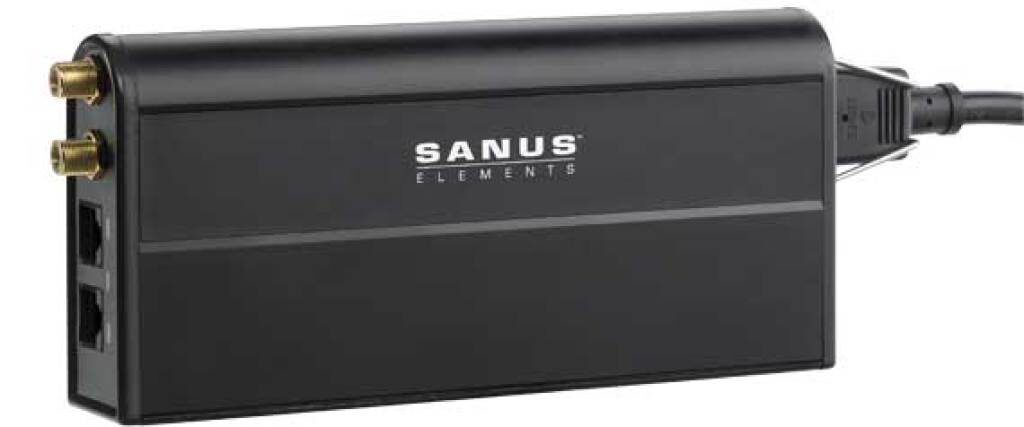
Protect your valuable studio equipment from power surges and voltage fluctuations with a power conditioner or surge protector.
Power conditioners also help reduce electrical noise and interference, ensuring a cleaner power supply for your gear.
Room Calibration Tools
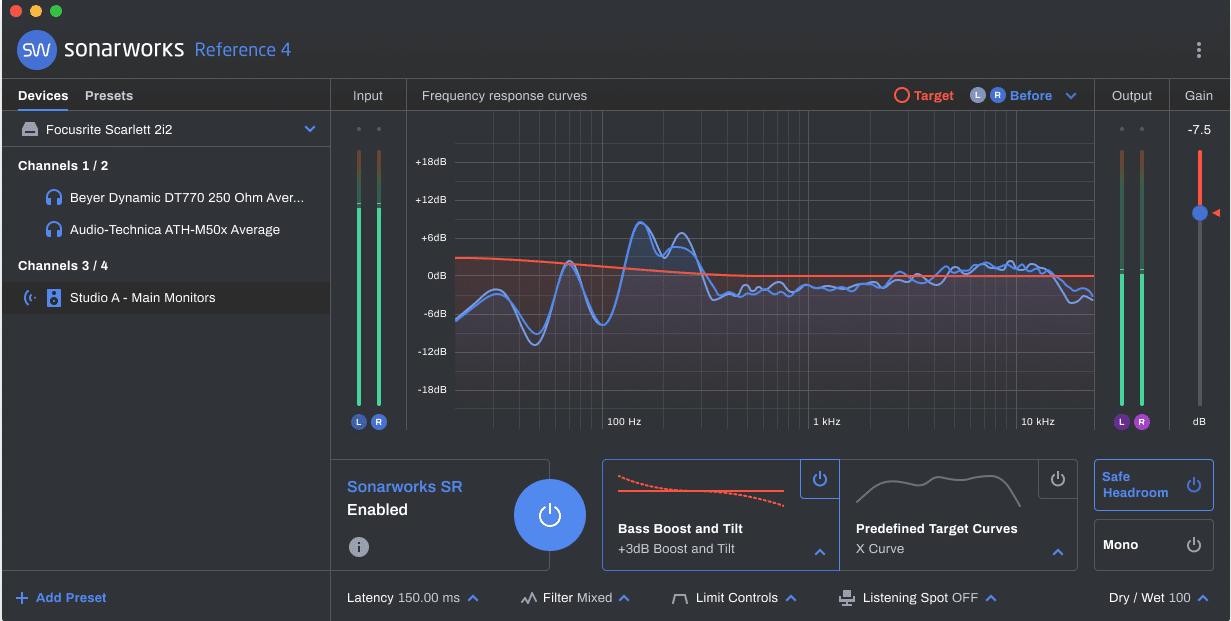
Calibrating your studio monitors and room acoustics can significantly improve the accuracy of your listening environment.
Room analysis software can help you measure your home studio room’s frequency response, identify problem areas, and optimize your monitor placement and acoustic treatment.
A good option would be Room EQ Wizard.
Hardware solutions, such as Sonarworks Reference, can apply corrective EQ to your monitors, ensuring a flatter frequency response for more accurate mixing.
Acoustic Guitars & Electric Guitars for Home Studios
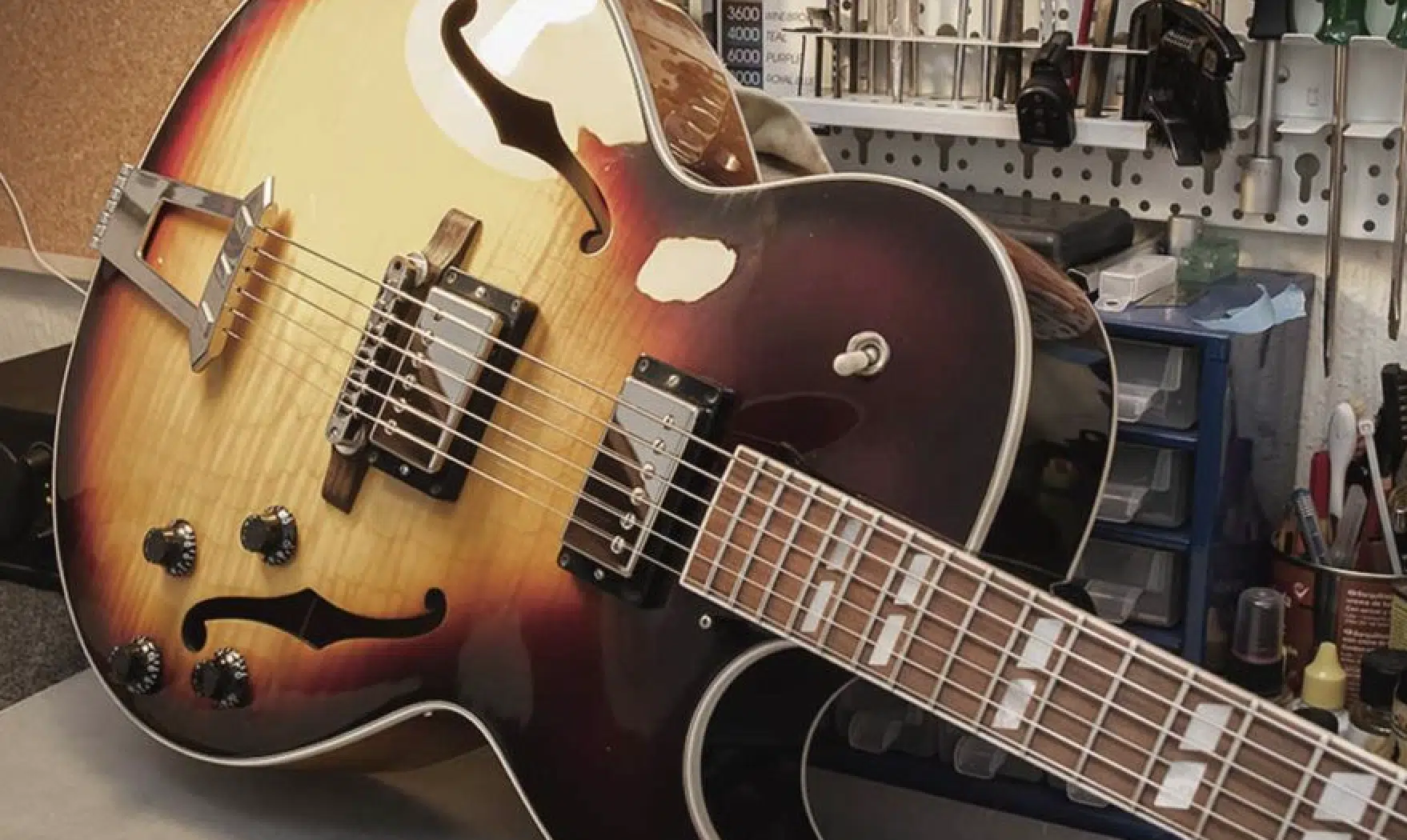
Having a good-quality guitar in your home studio is not just for a full band; it’s essential for recording guitar parts and composing music.
When selecting a guitar, consider factors like build quality, tonal characteristics, playability, and your preferred music genre(s).
It’s also a good idea to have both types of guitars in your home studio, as each offers a unique sound palette and creative possibilities, so it just makes sense.
Acoustic Guitar Recommendations: Consider popular acoustic guitar models like the Martin D-18, the Taylor 414ce, and the Yamaha FG800.
These guitars offer excellent sound quality, playability, and durability. Any of them serve as a great choice for home studio recording and songwriting.
Electric Guitar Recommendations: For electric guitars, consider the Fender Stratocaster, the Gibson Les Paul, and the PRS Custom 24.
These iconic guitars have been used in countless recordings across various genres and are known for their versatility, playability, and exceptional tone. Also, check out some simple studio electric guitar amps as well.
Bass Guitars for Home Studios
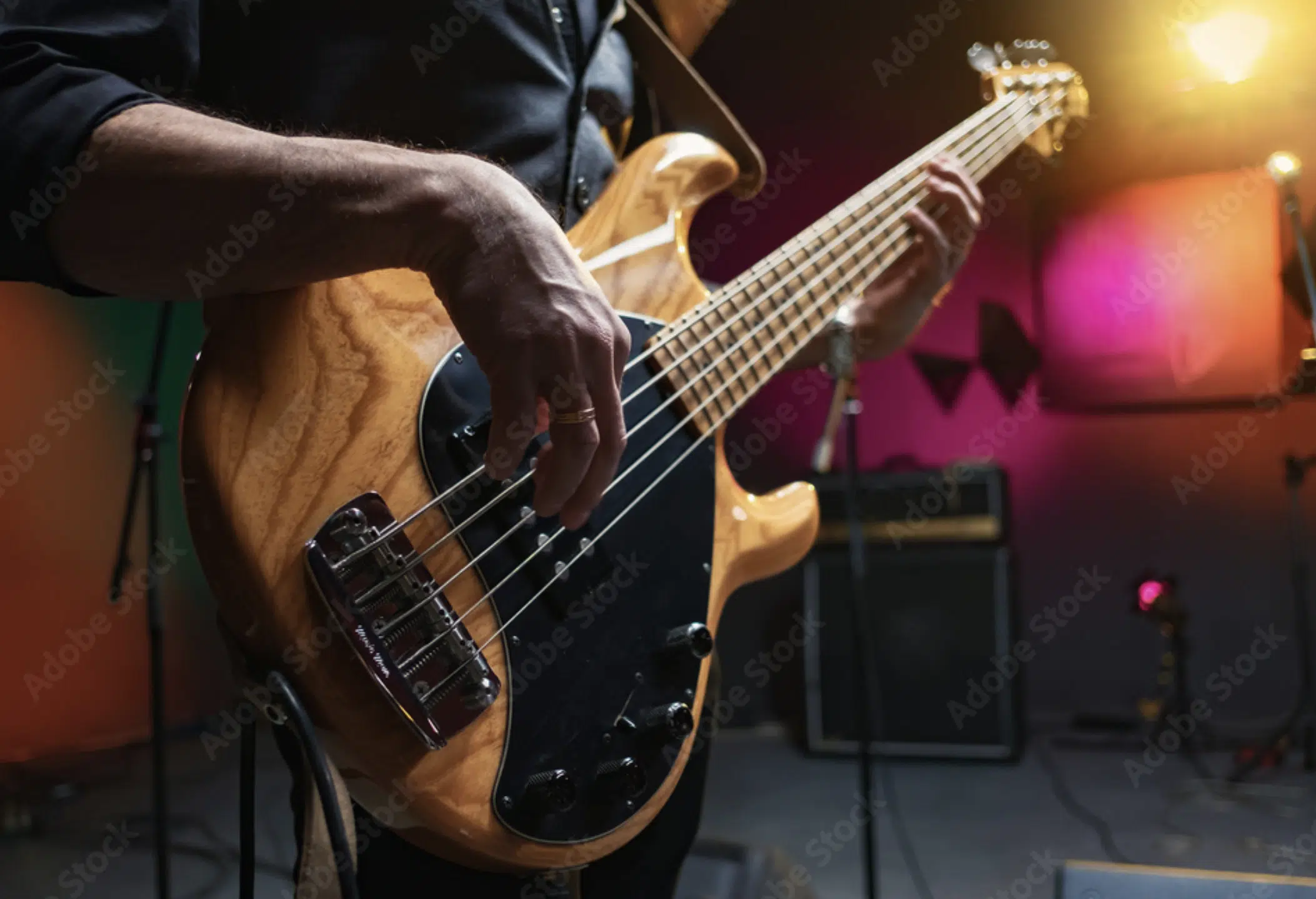
A bass guitar is a prime instrument for laying down the foundation of your songs and adding depth to your music.
They provide the groove that drives the rhythm and harmony of your track.
Having a well-maintained and reliable guitar ensures that you can create tight, consistent, and professional-sounding basslines for your music.
When choosing a bass guitar for your home studio, you can opt for an electric bass or an acoustic bass, each offering distinct advantages and tonal characteristics:
- Electric Bass 一 Electric basses are the most common type used in modern music production, offering a wide range of tonal options and versatility. They require an amplifier or direct input (DI) box to connect to your audio interface to translate bass frequencies.
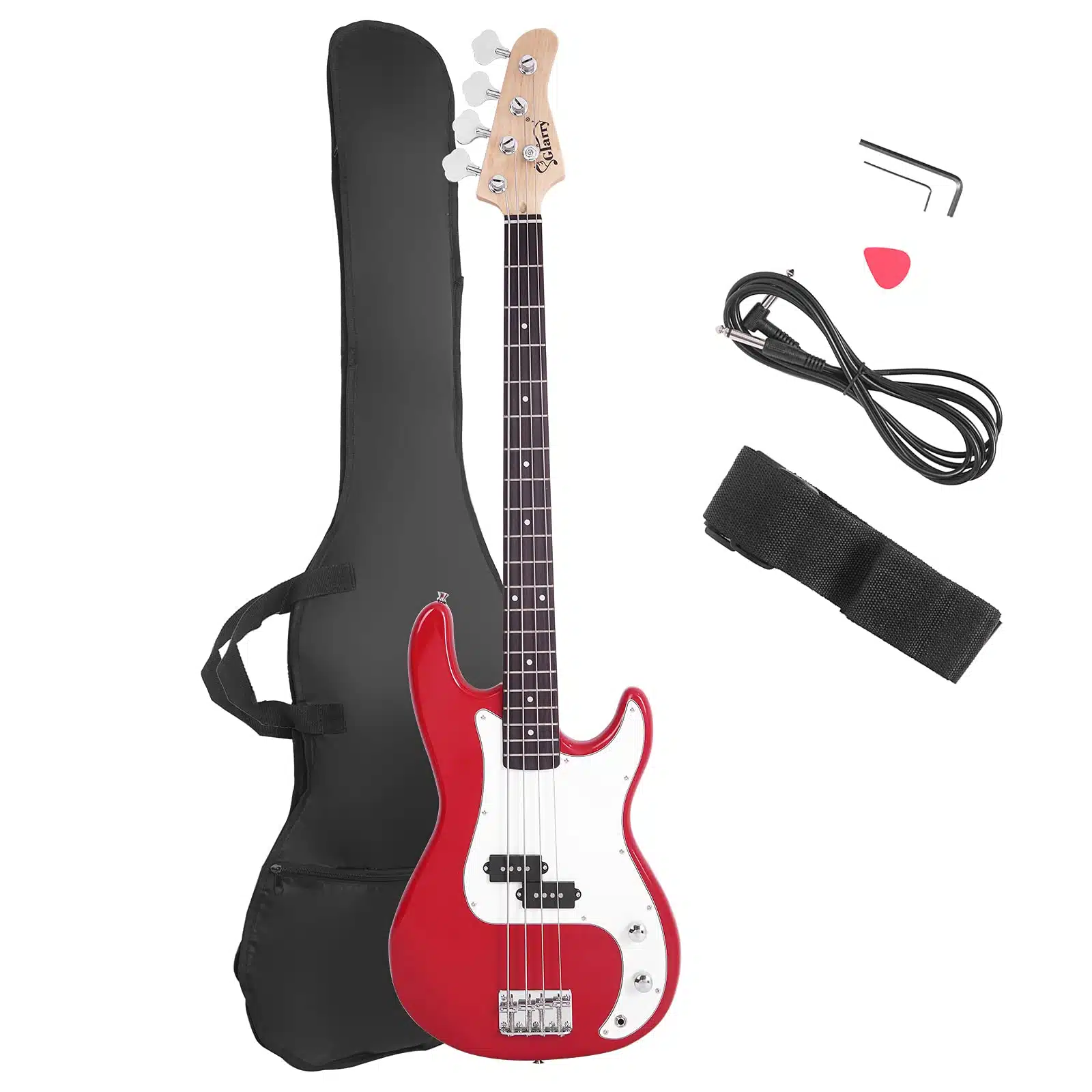
- Acoustic Bass 一 Acoustic bass guitars produce sound through their resonant body and can be recorded using a microphone or a built-in pickup. While they might not be as versatile as electric basses, they can add a warm, organic tone to your music, particularly in genres like folk, jazz, and acoustic pop.
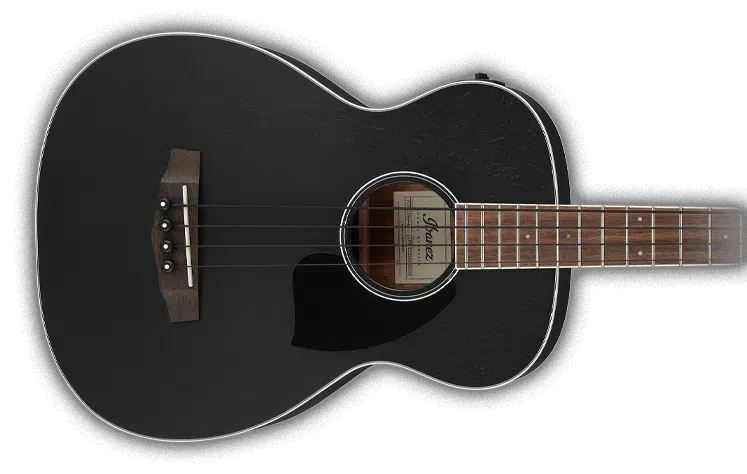
Guitar & Bass Amplifiers
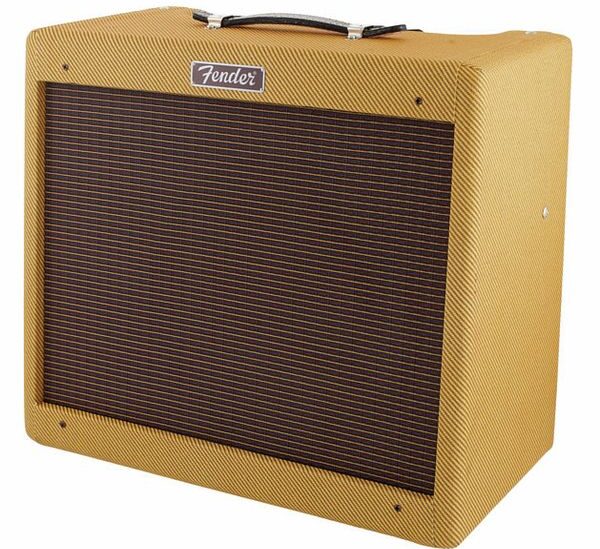
Guitar and bass amplifiers play a crucial role in shaping the tone and character of your instruments.
While it’s possible to use virtual amp simulators in your DAW, there’s nothing quite like the organic and dynamic sound of a real amplifier.
Having a versatile and high-quality amp in your home studio is important because it can significantly impact the tonal characteristics and clarity of your recorded instruments, such as guitars and basses.
They help you to capture a more professional and polished sound that translates well across different listening systems.
Do some research before purchasing, especially if it’s a more expensive model.
FX Pedals
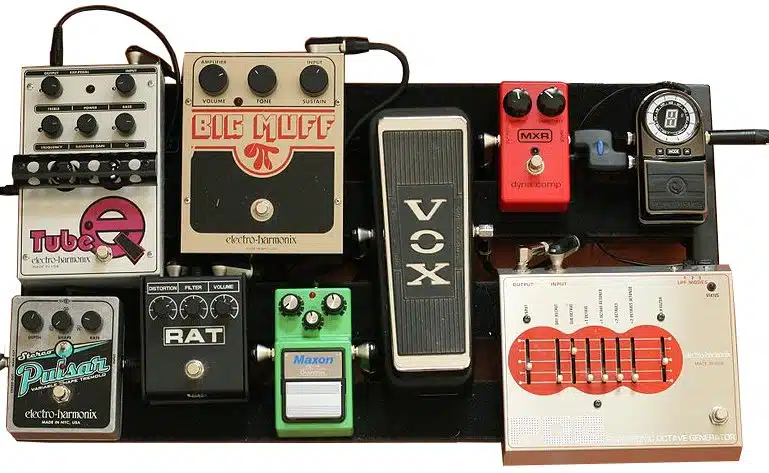
Incorporating effects pedals into your home studio setup can greatly expand your sonic palette and allow you to experiment with a wide range of textures and soundscapes.
They’re typically used with guitars and basses, but can also be applied to other instruments, vocals, or even entire mixes.
Needless to say, they offer limitless creative possibilities, so it’s important to look into each specific kind.
Some of the most common types of effects pedals include overdrive/Distortion, delay, reverb, modulation, and compression.
These pedals offer a solid foundation for crafting your guitar and bass tones and can be combined in various ways to create unique sounds.
Virtual Instruments & Sample Libraries
In addition to real instruments, virtual instruments, and sample libraries are crucial tools for any home studio (and any music production enthusiast).
They provide you with a vast range of sounds and instruments that can be used to create and enhance your music.
From realistic orchestral sample libraries to cutting-edge synthesizers, virtual instruments allow you to expand your sonic palette and add depth and texture to your productions.
Some essential virtual instruments for your home studio include:
- Native Instruments Komplete
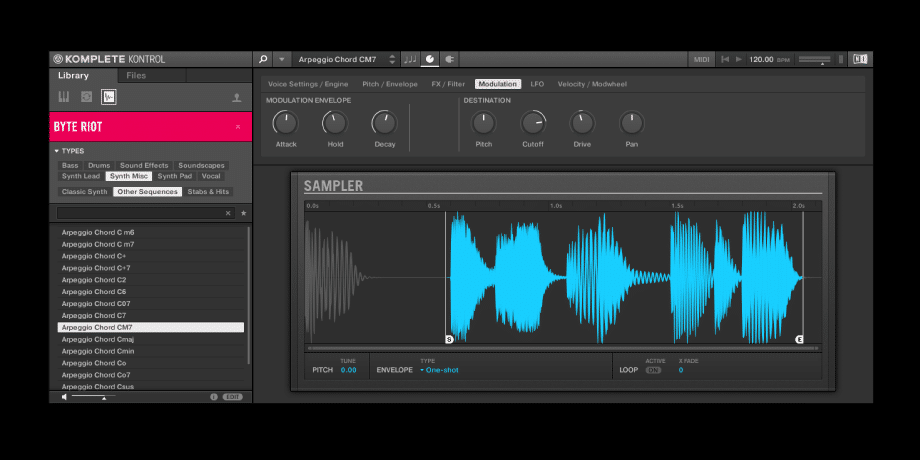
- Spectrasonics Omnisphere
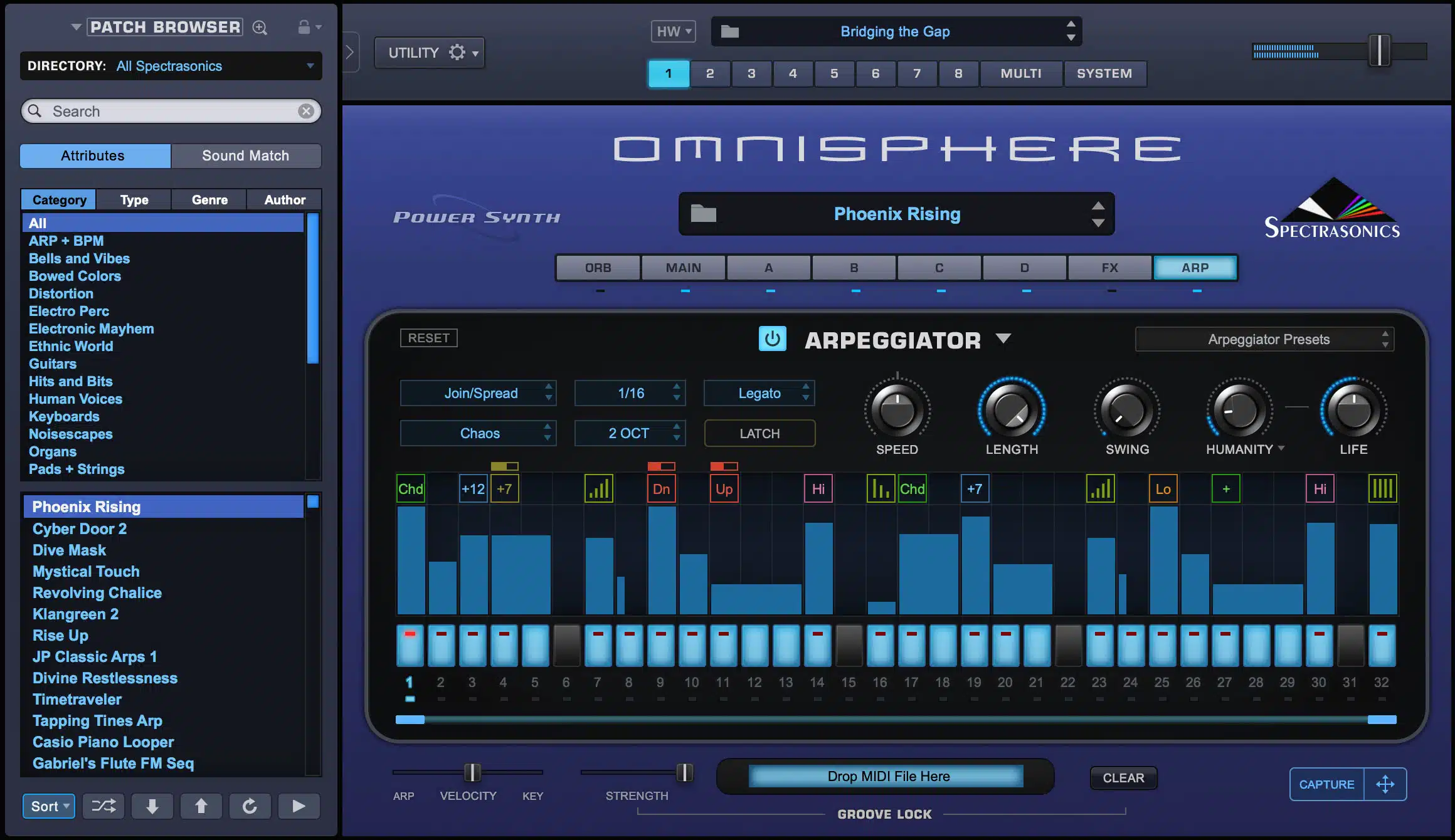
- The Arturia V Collection
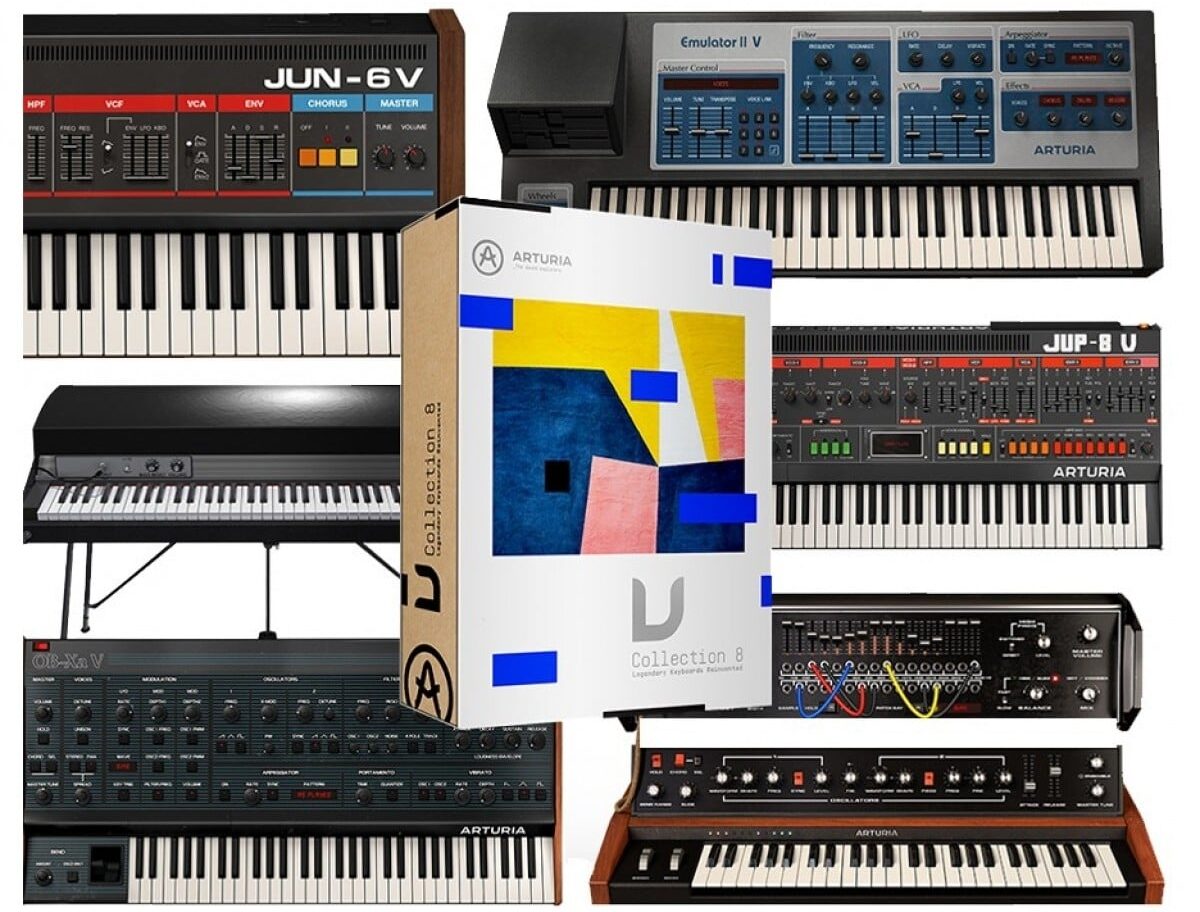
These comprehensive collections offer a wide range of instruments, such as synthesizers, pianos, drums, and orchestral instruments.
They give you access to an extensive sound library to suit various music genres and production styles.
Final Thoughts
Building your dream home studio is an exciting and rewarding journey, filled with endless possibilities for creativity and growth.
By carefully selecting the right gear, optimizing your space, and investing time in learning your craft, you’ll be well on your way to crafting music in the comfort of your own home like a pro!
Remember that the key to a successful home studio is striking the right balance between functionality, quality, and budget.
As you progress in your music production journey, you may find yourself upgrading and expanding your setup to suit your evolving needs and preferences.
So, embrace the process, stay curious, and continue to learn from your experiences.
With the insights/secrets shared in this comprehensive guide, you’re now equipped to embark on your home studio adventure.
So, let your creativity flow, experiment with new sounds and techniques, and most importantly, have fun making music in your ultimate home studio.
After you choose the perfect DAW to compliment your home studio, you’re going to want the hottest sounds available.
Luckily, found within the FREE Unison Famous Beatmaker Drum Essentials are the most mind-blowing drums on the planet.
After you download the pack, you’ll have access to the exact drums from the biggest hit songs, recreated with 99.9% accuracy by our world-class sound designers.
Needless to say, they’re mixed to perfection, can skyrocket your tracks, and will resonate with your listeners forever.
Until next time…







Leave a Reply
You must belogged in to post a comment.